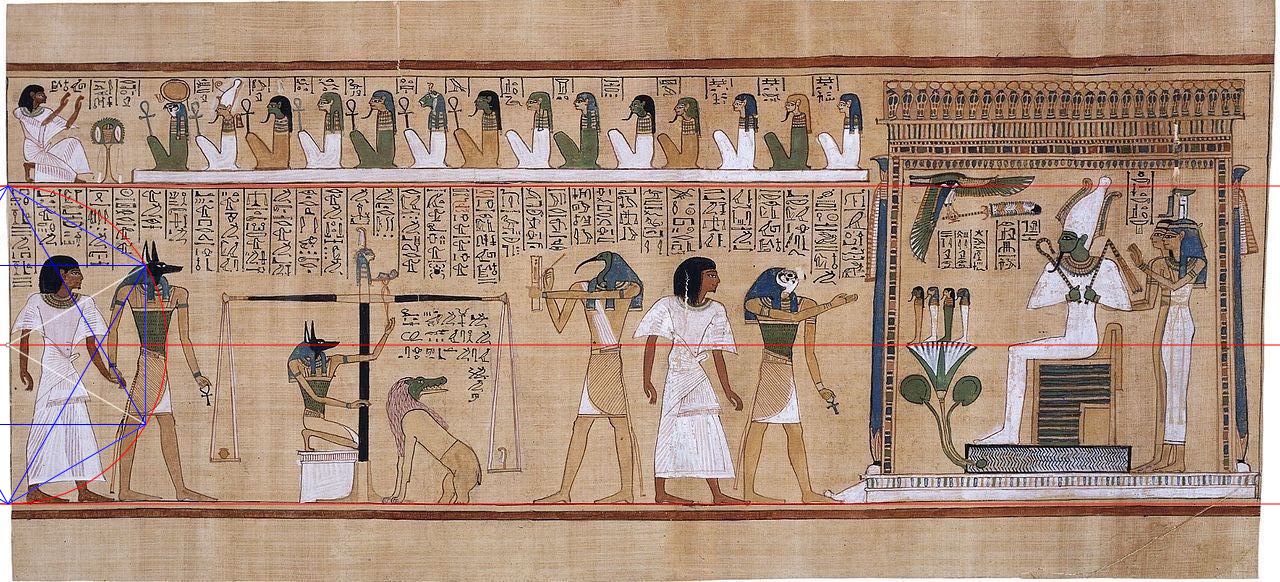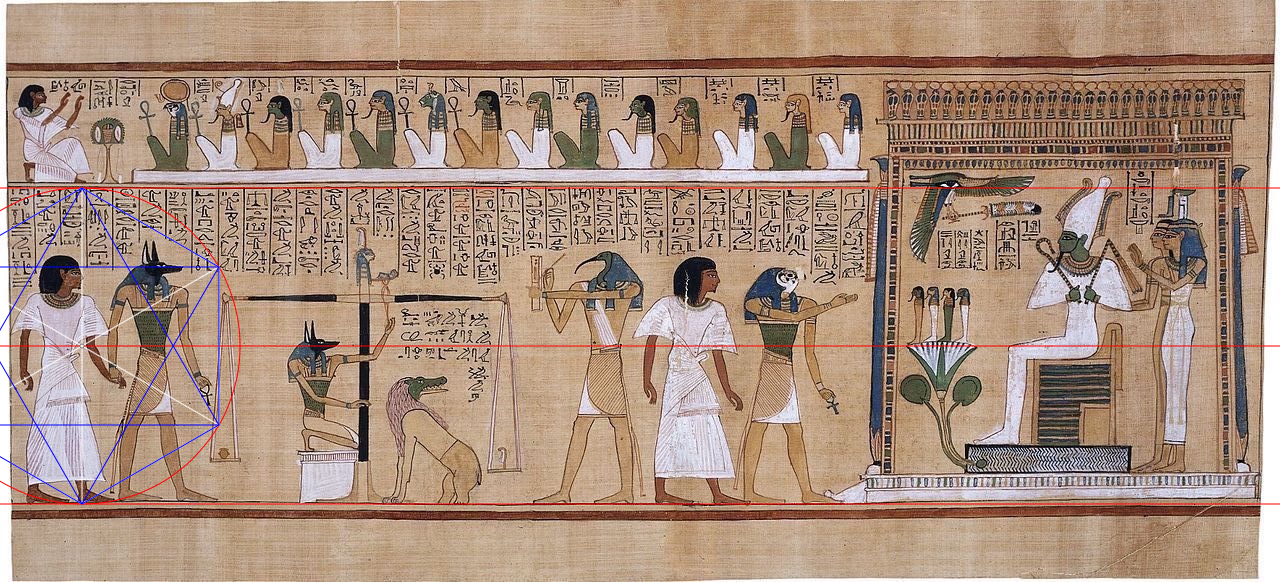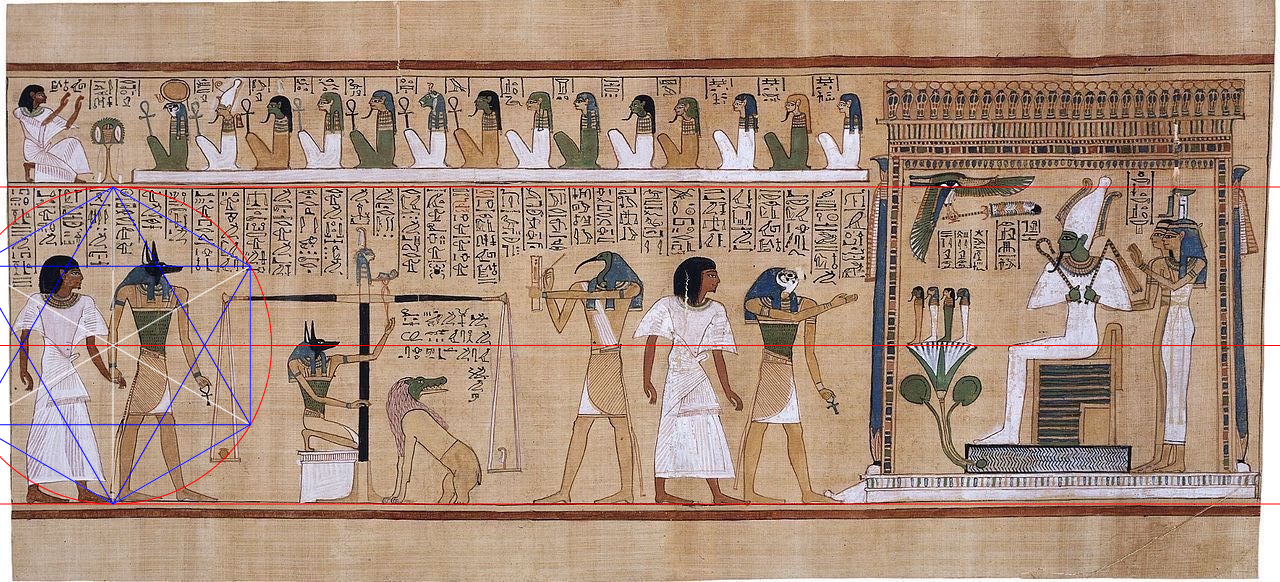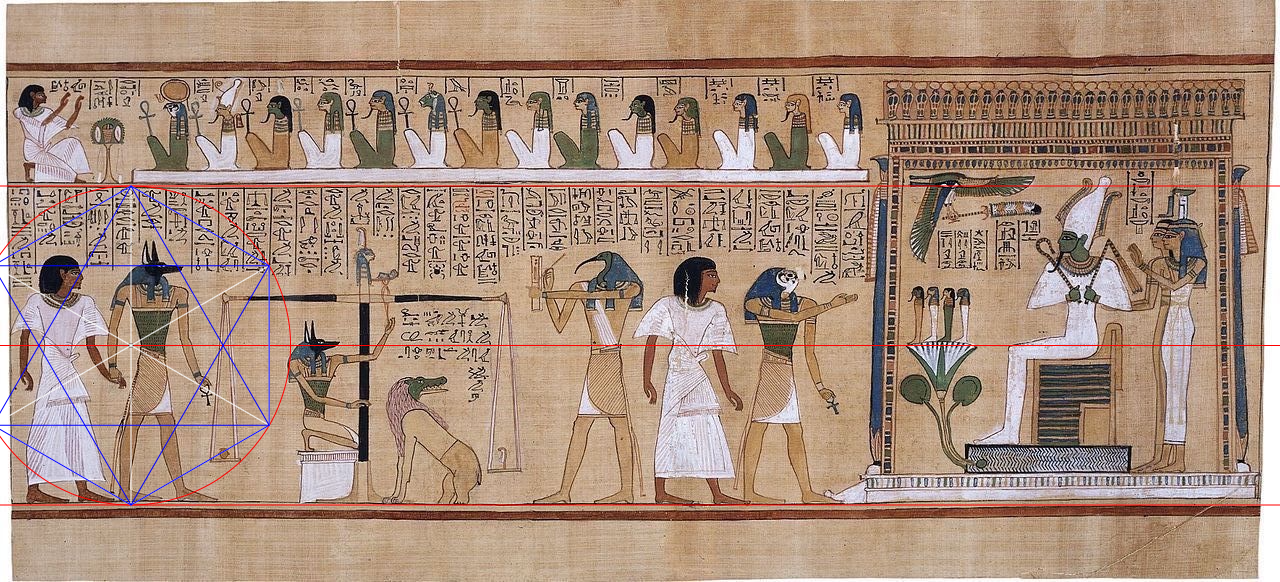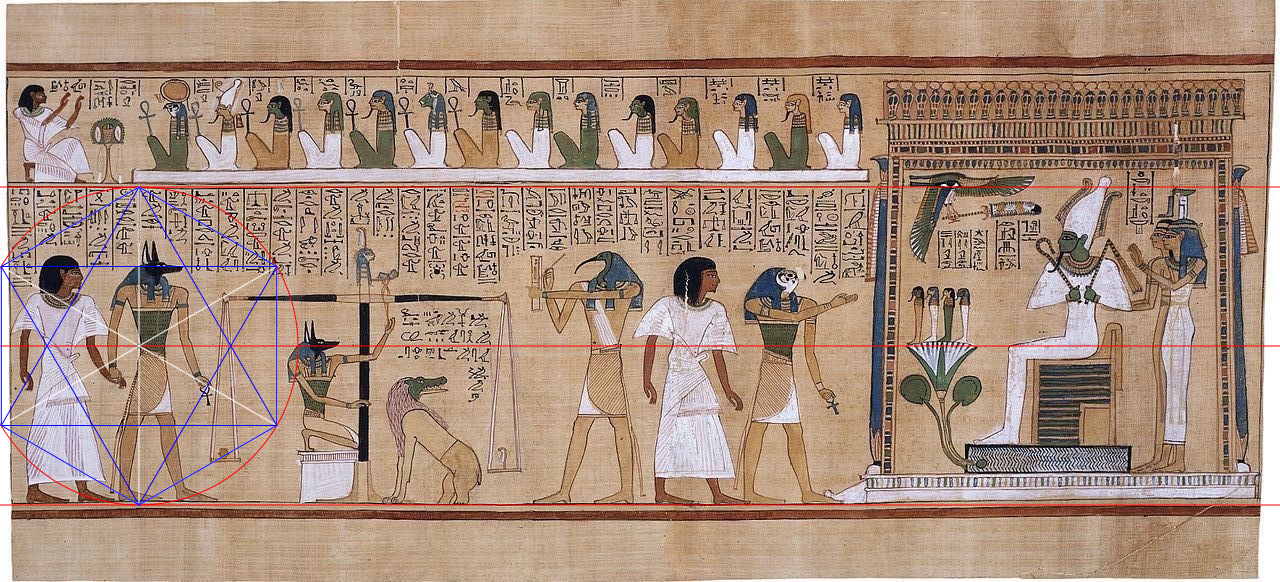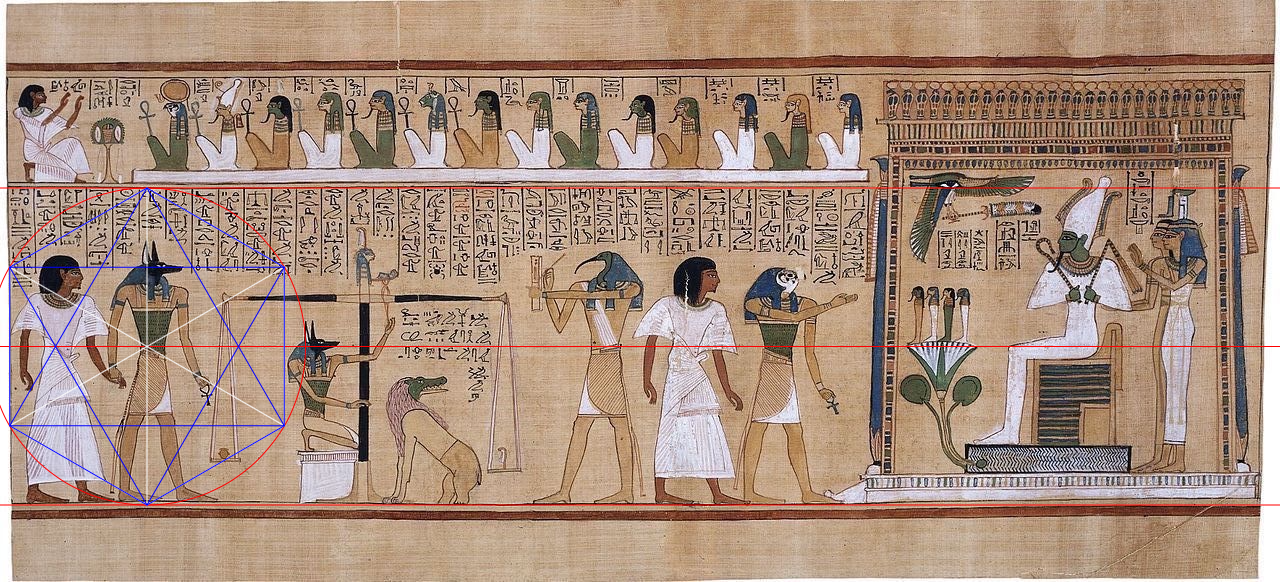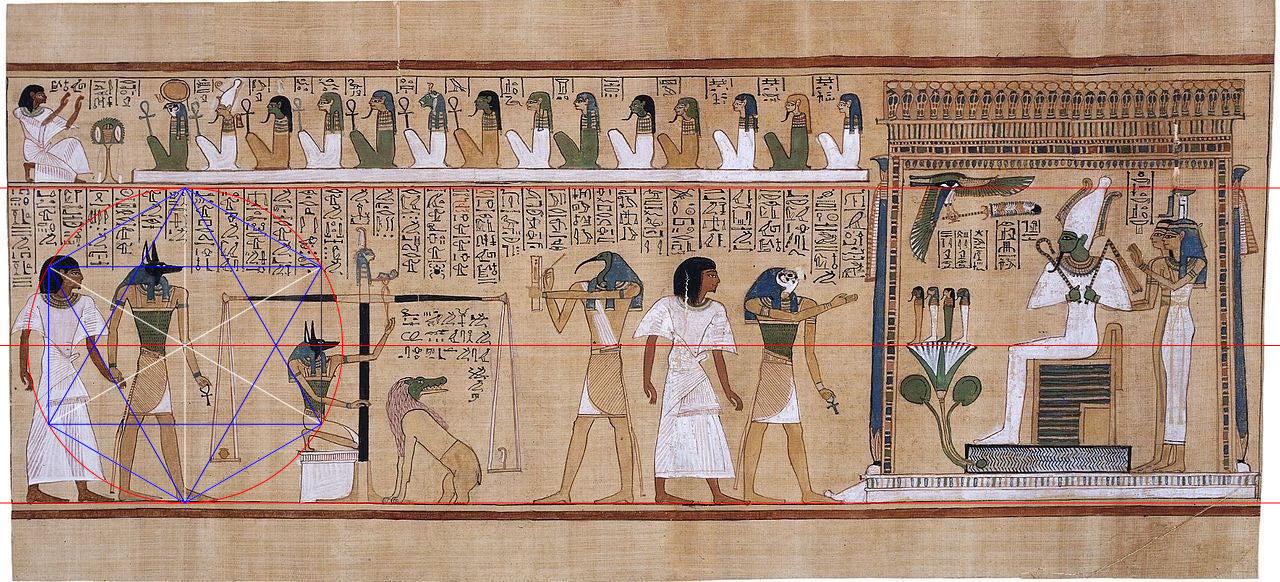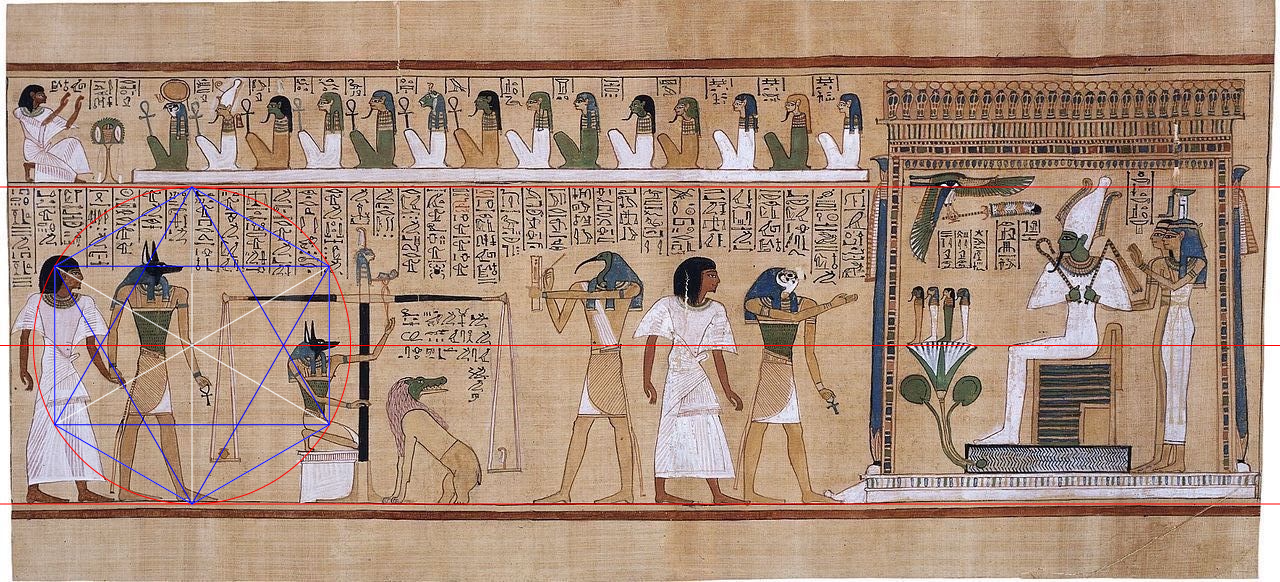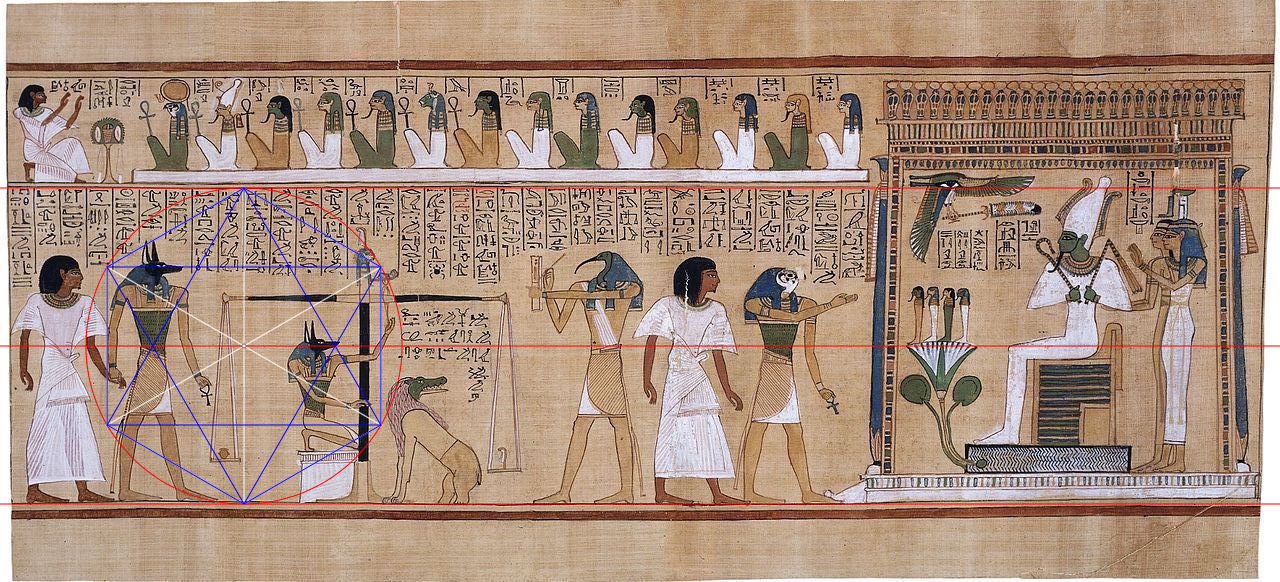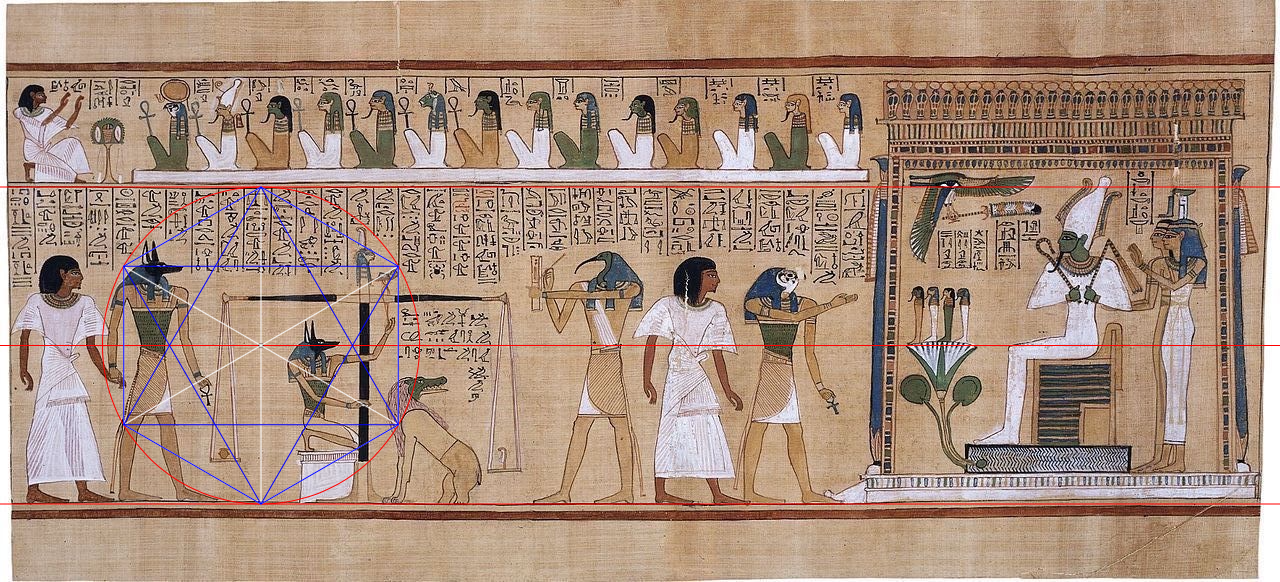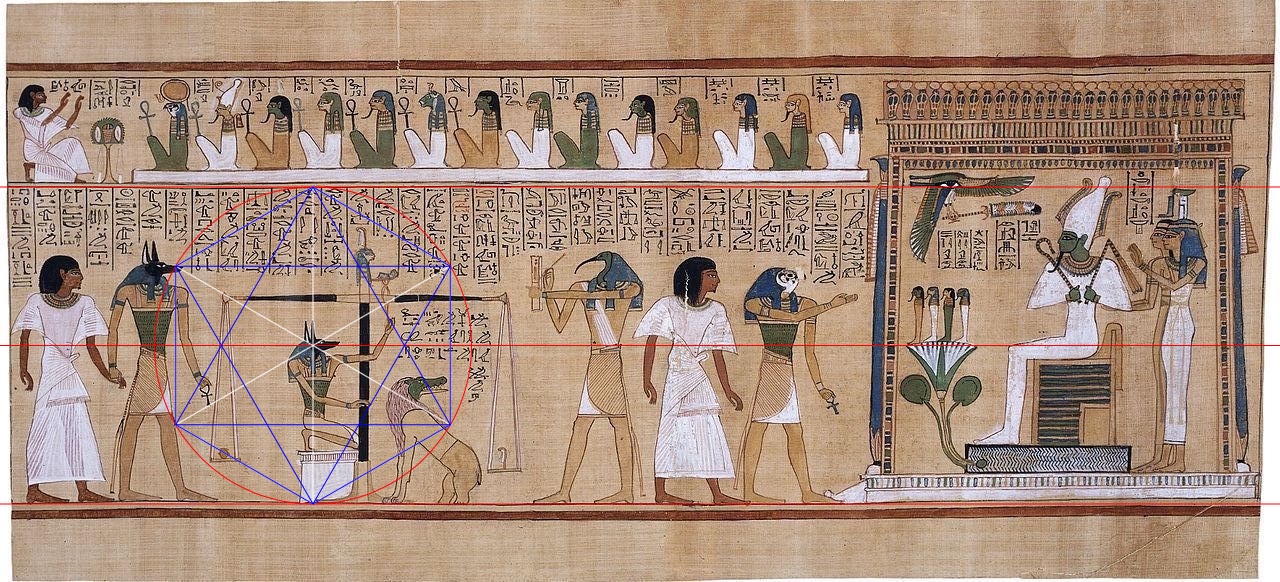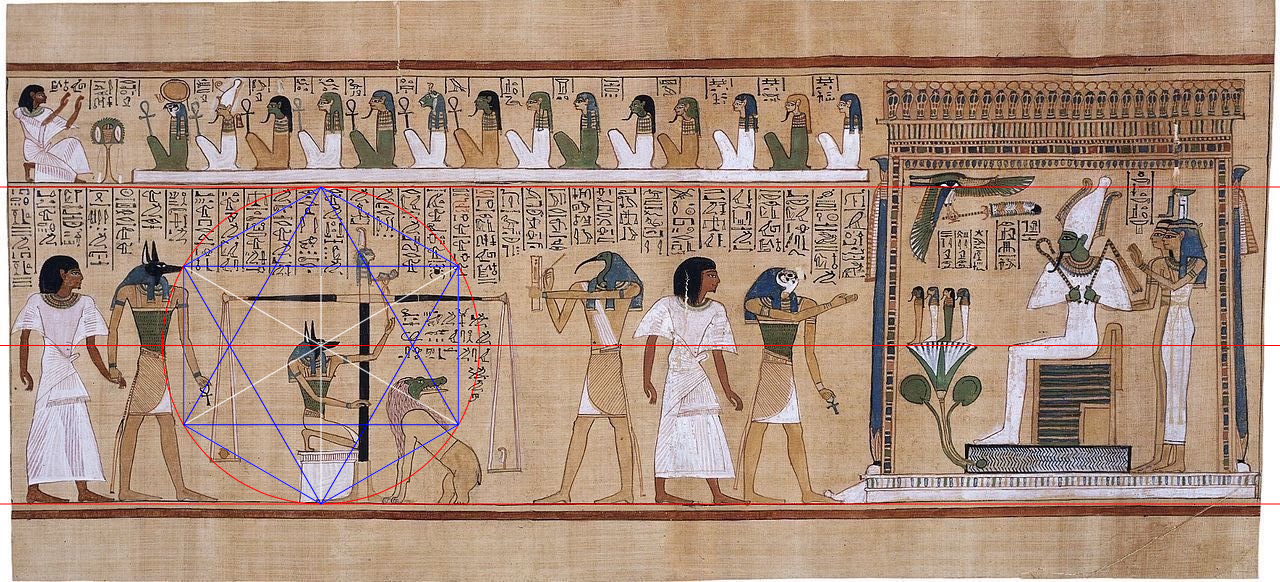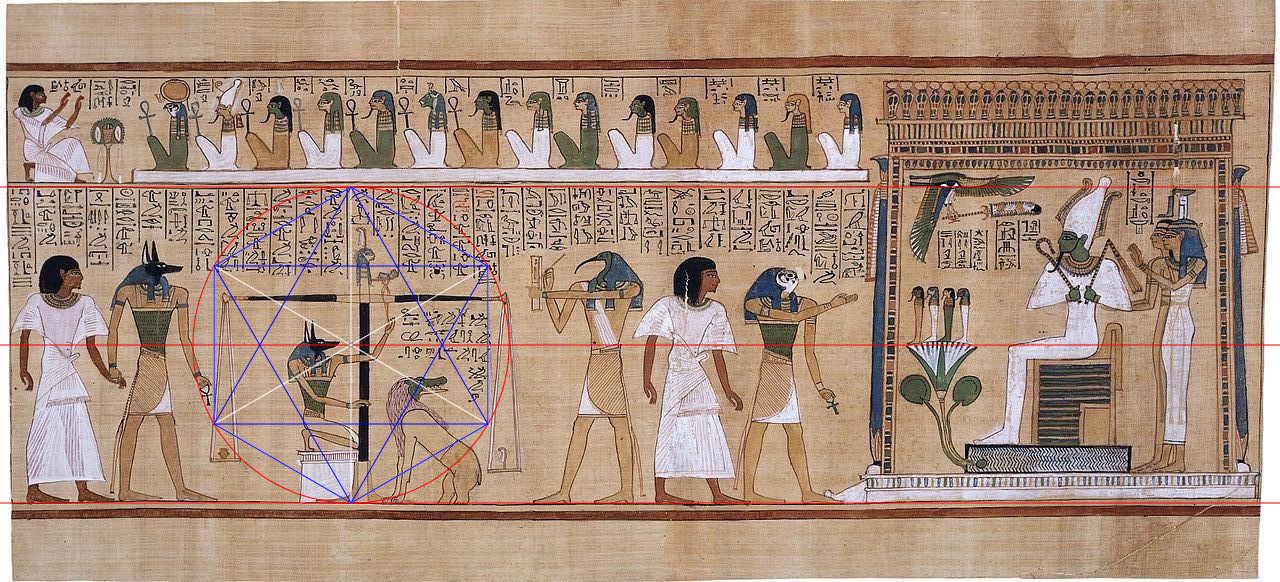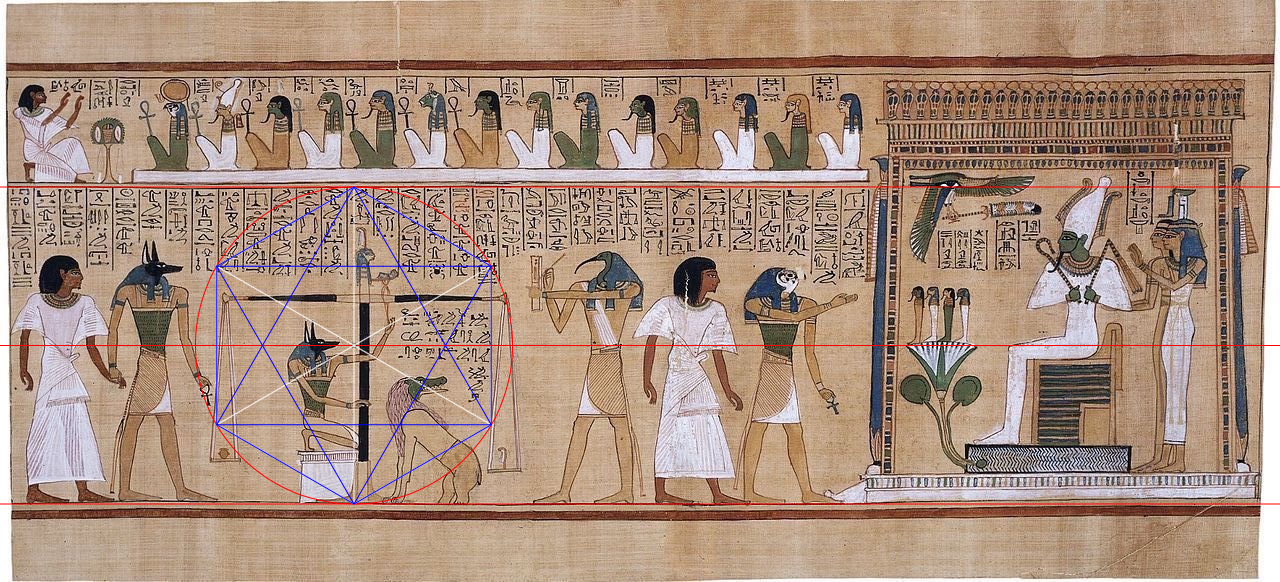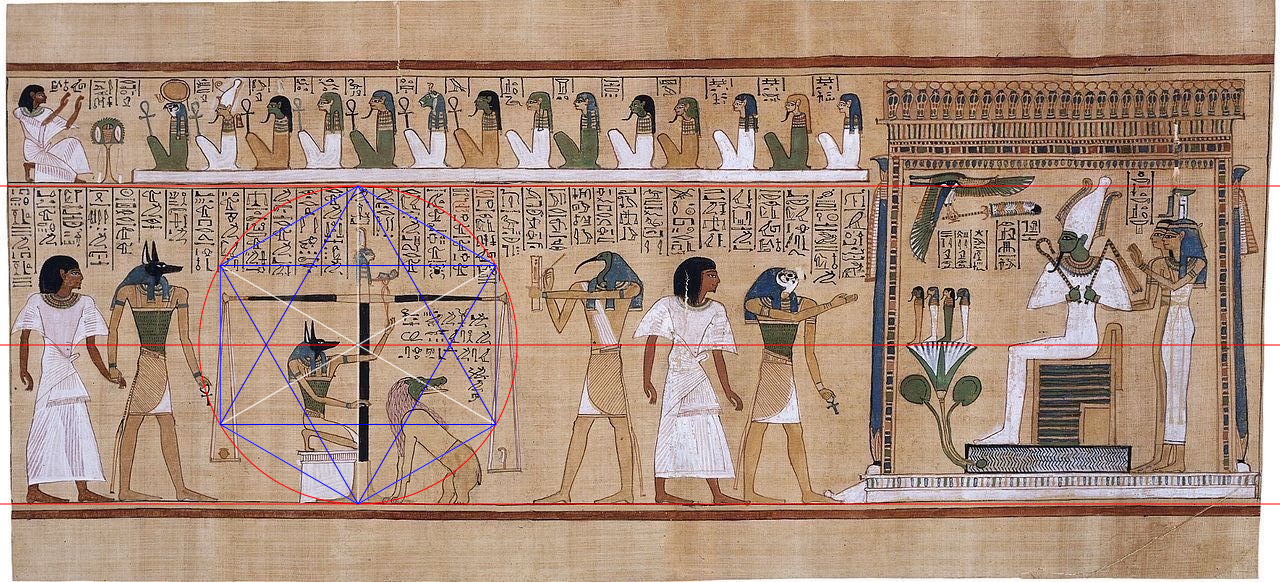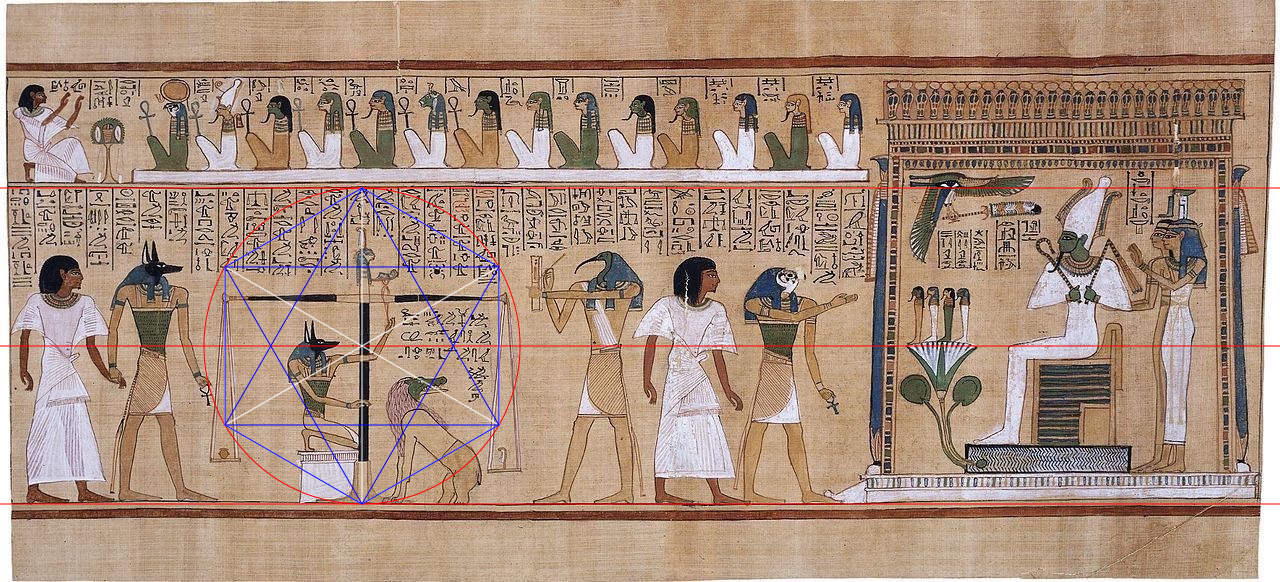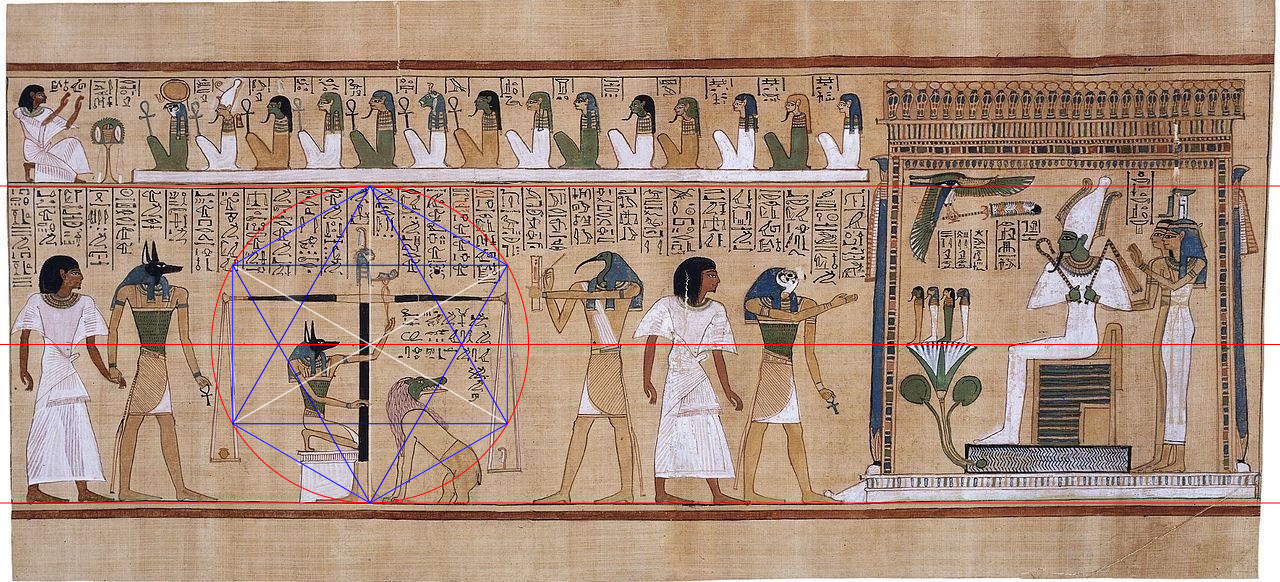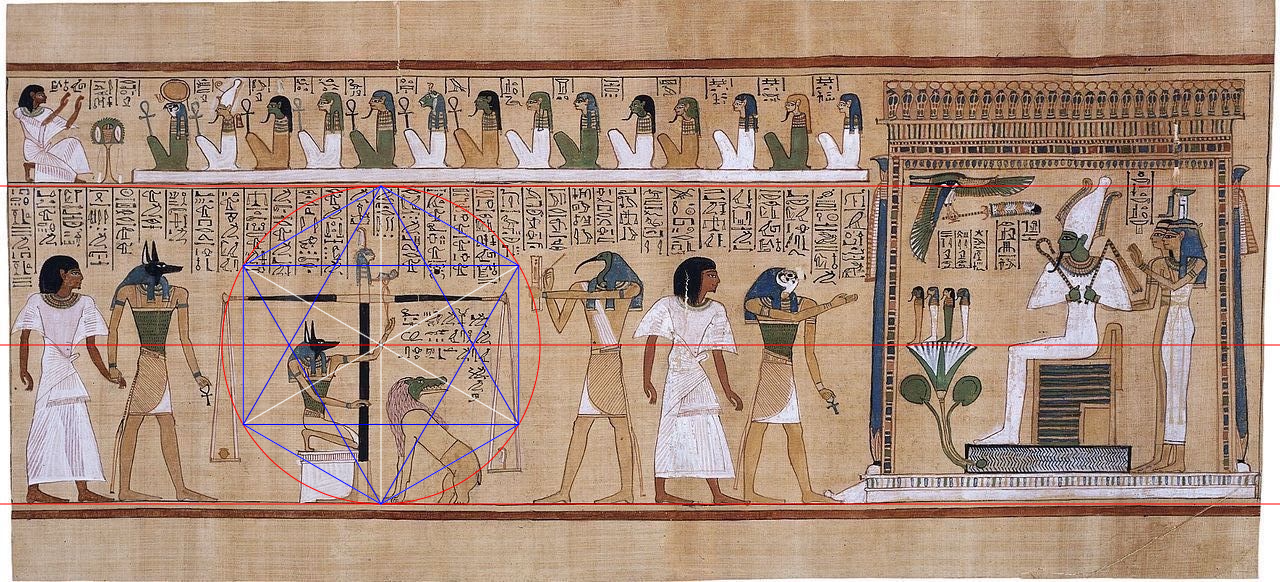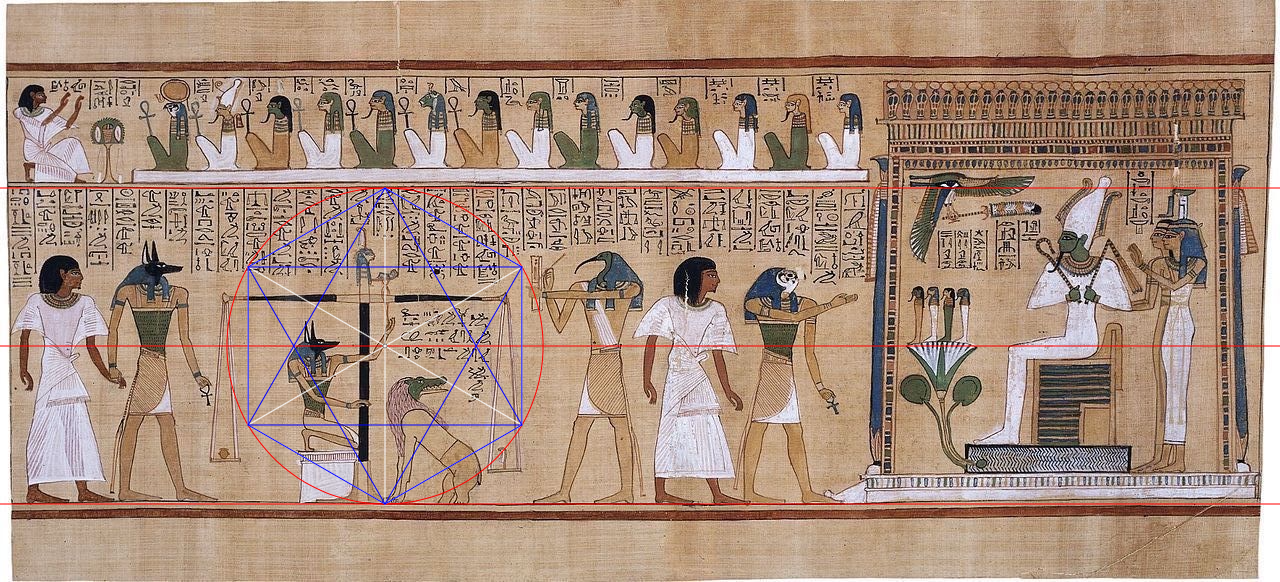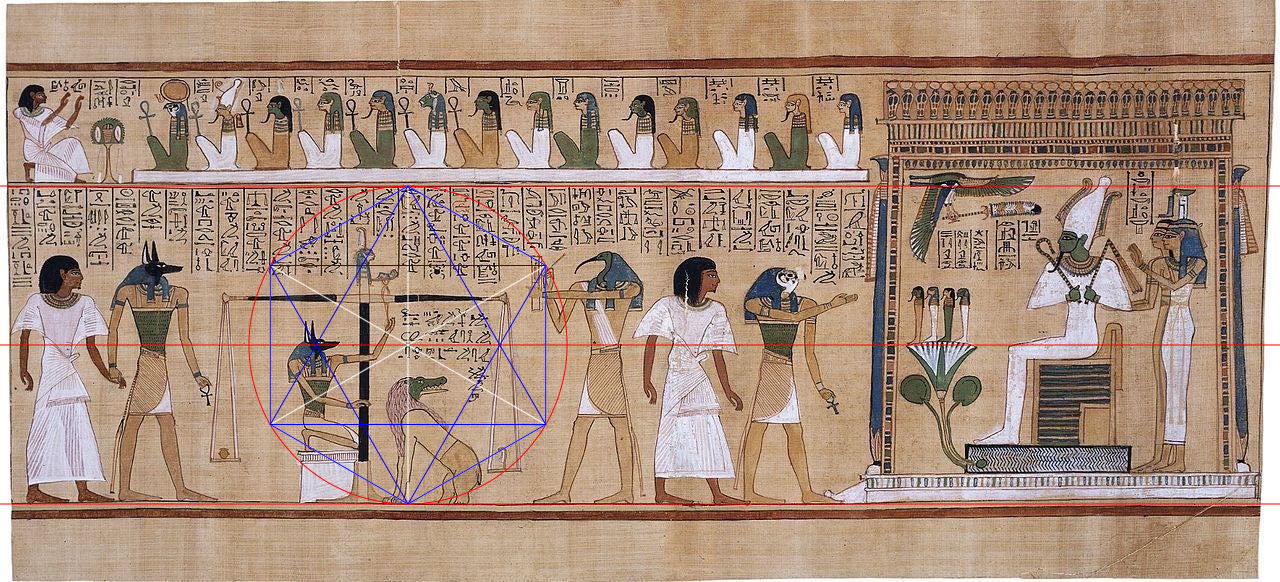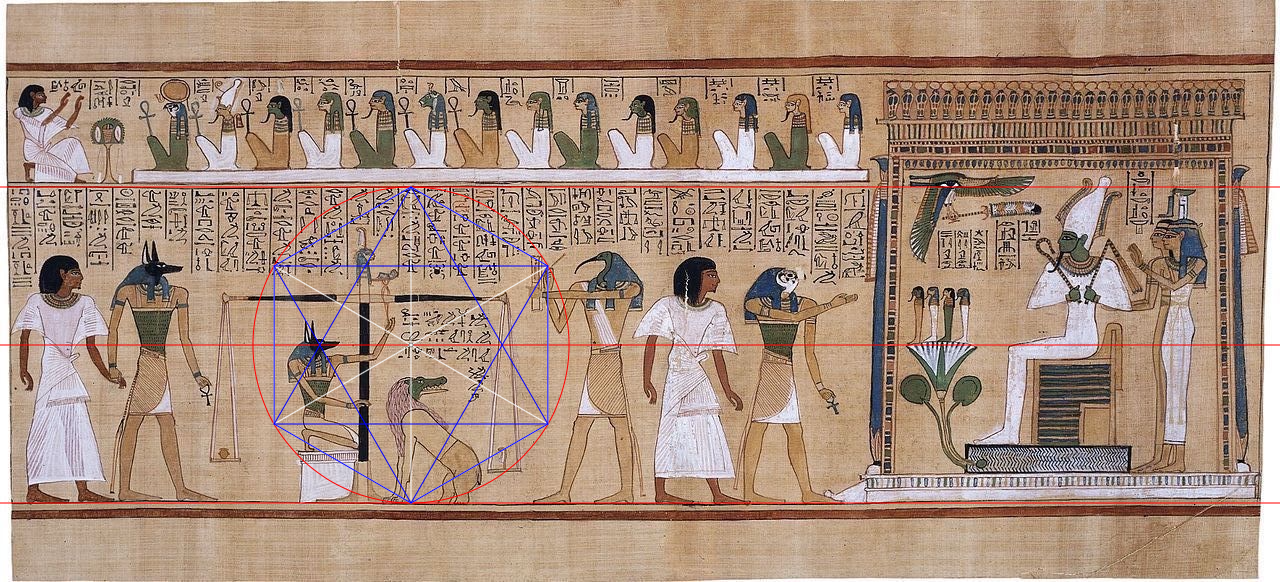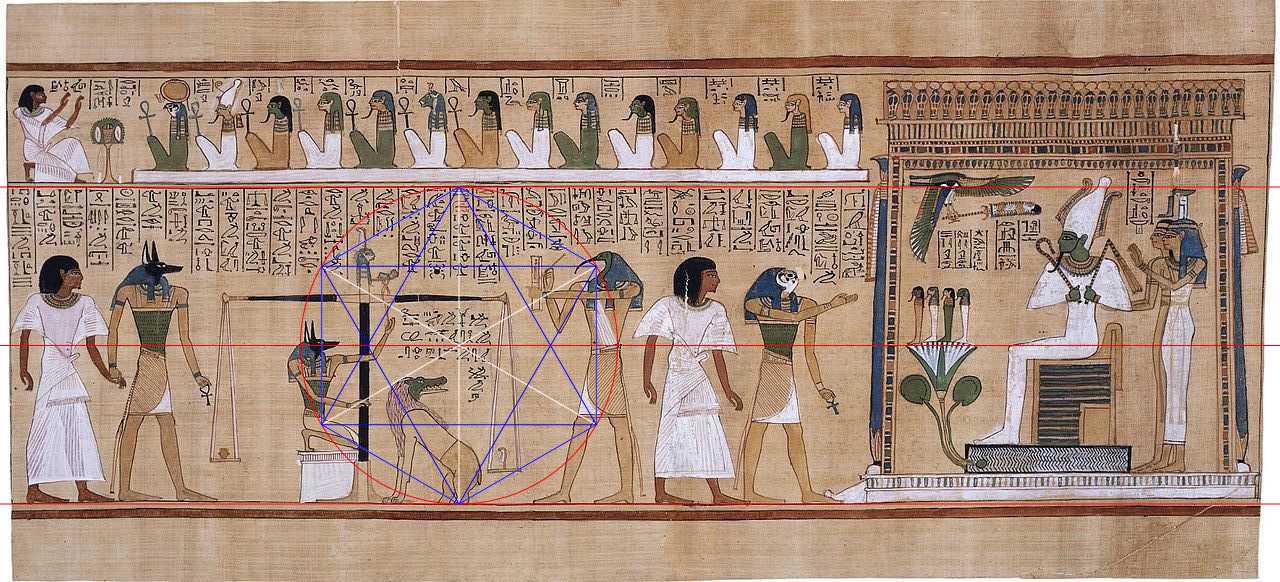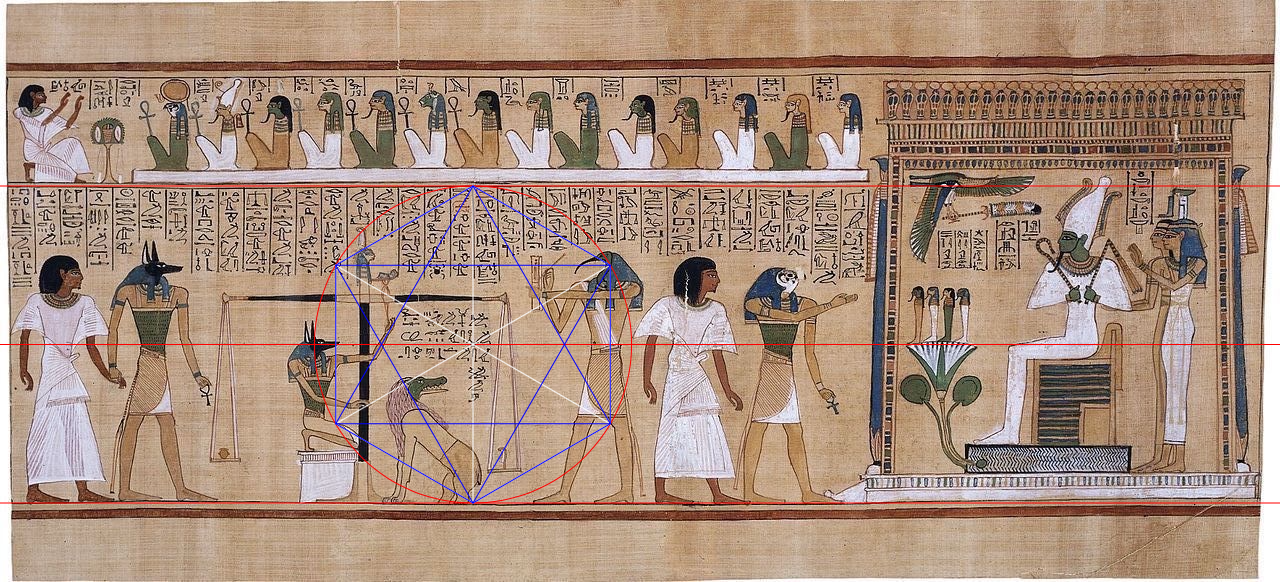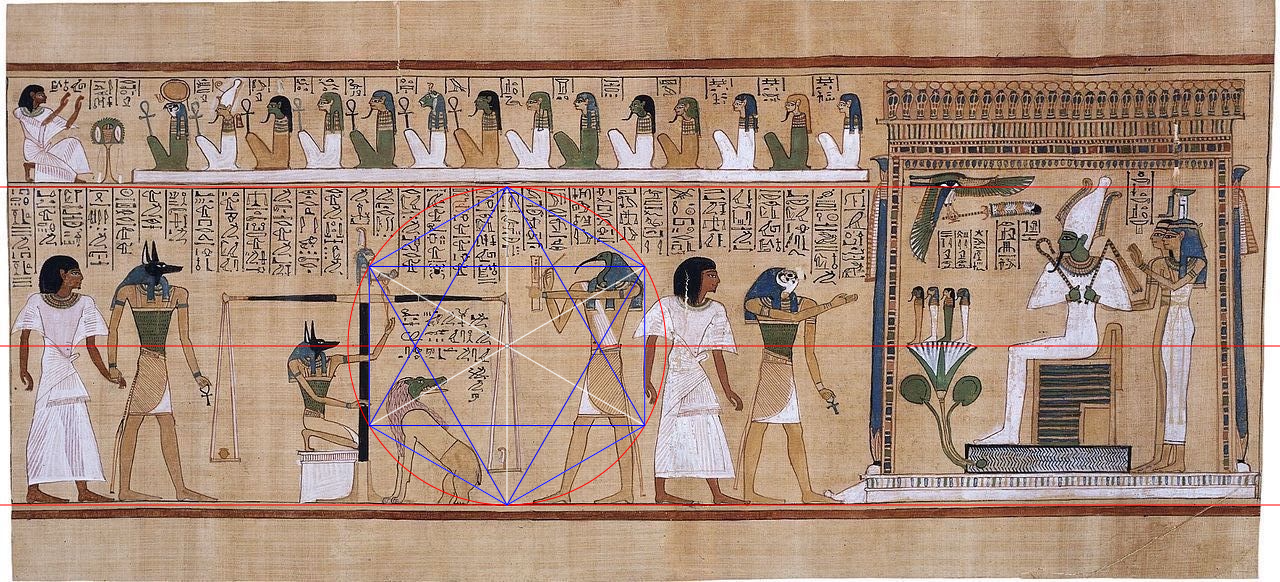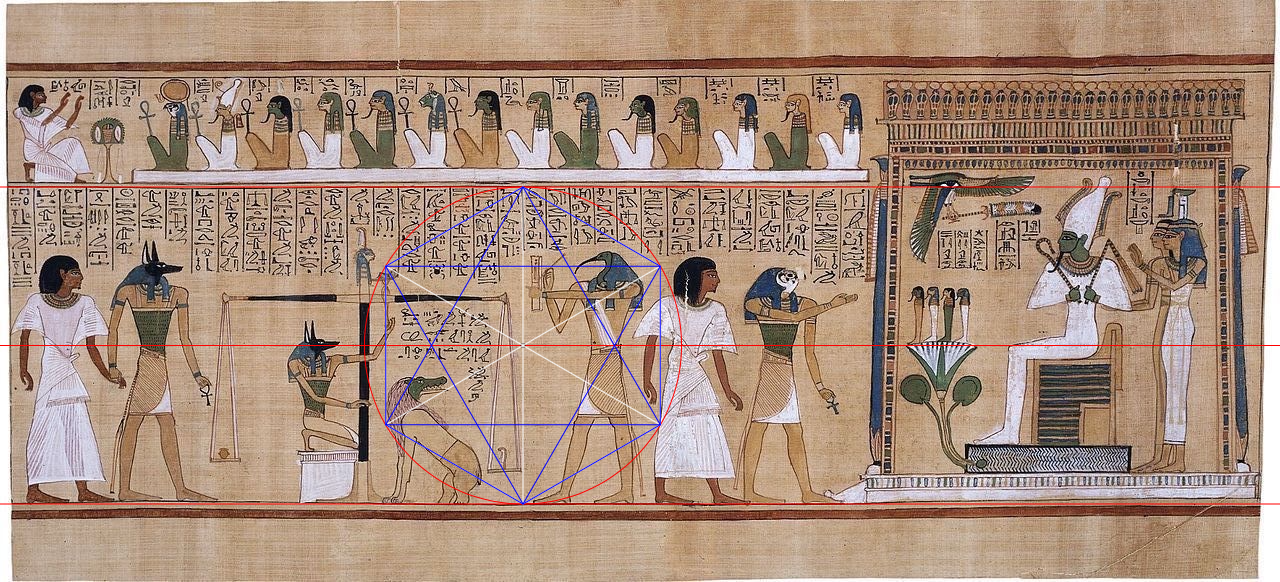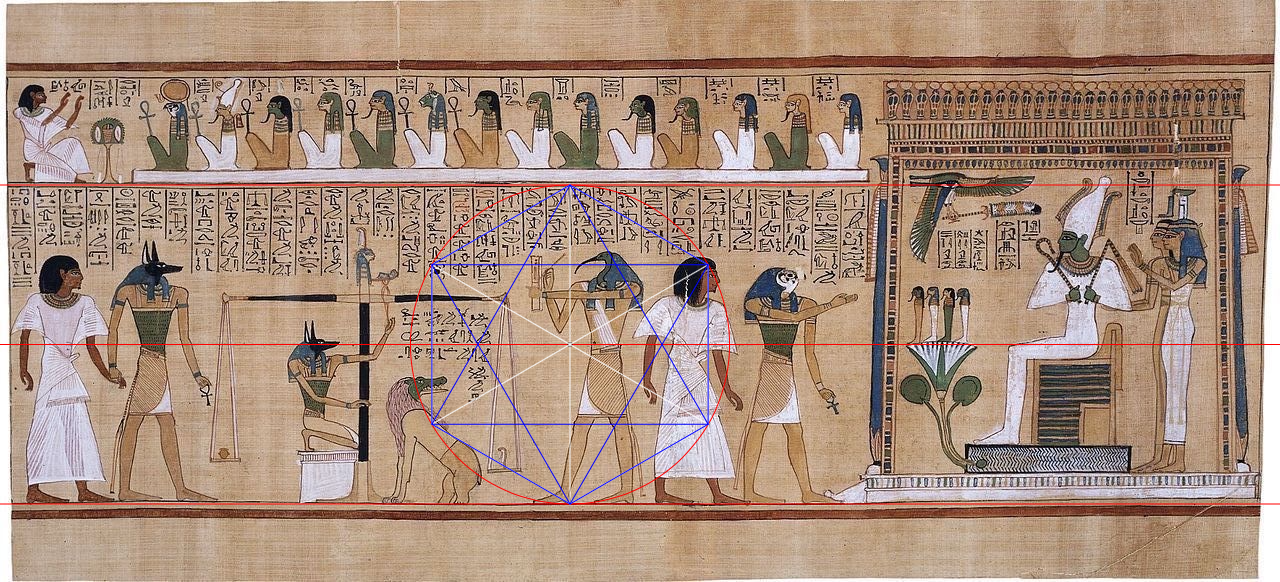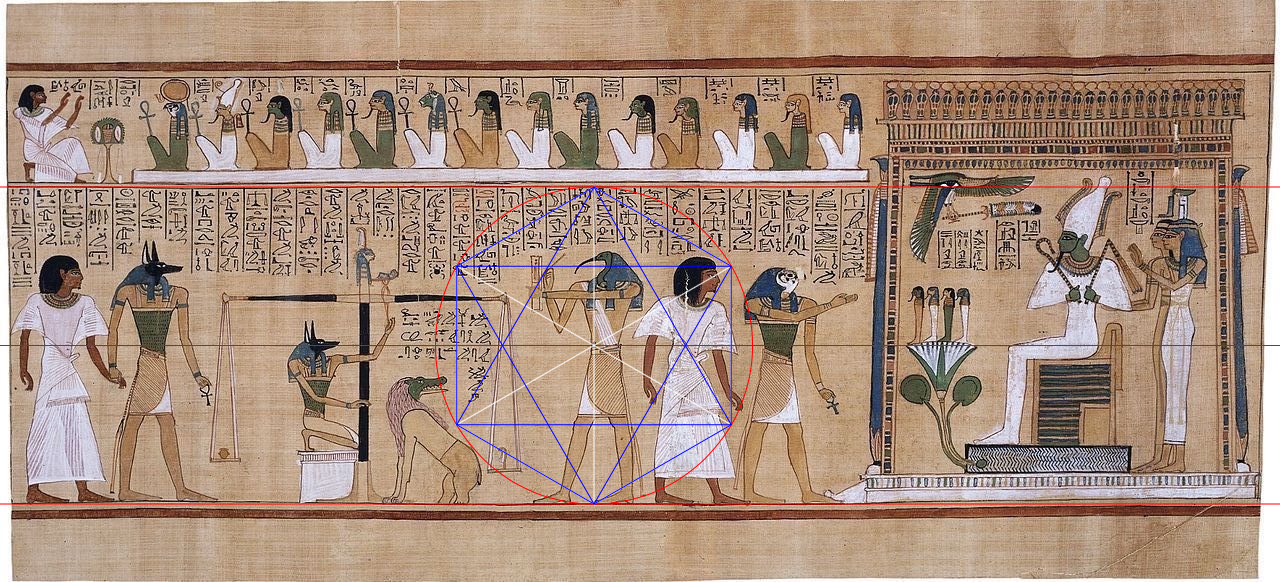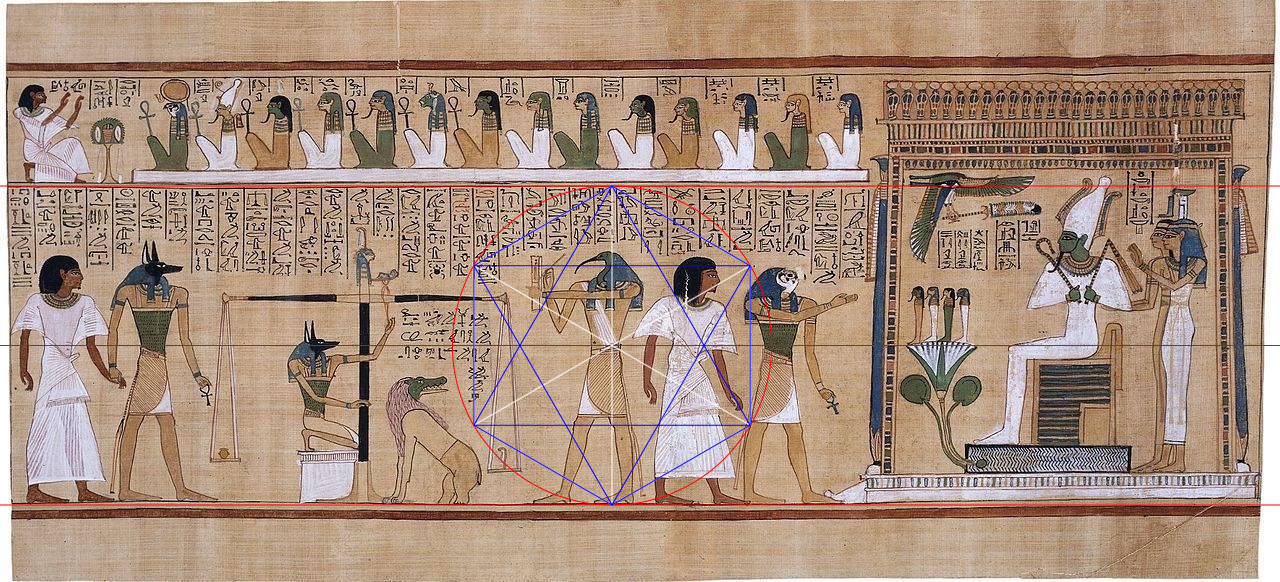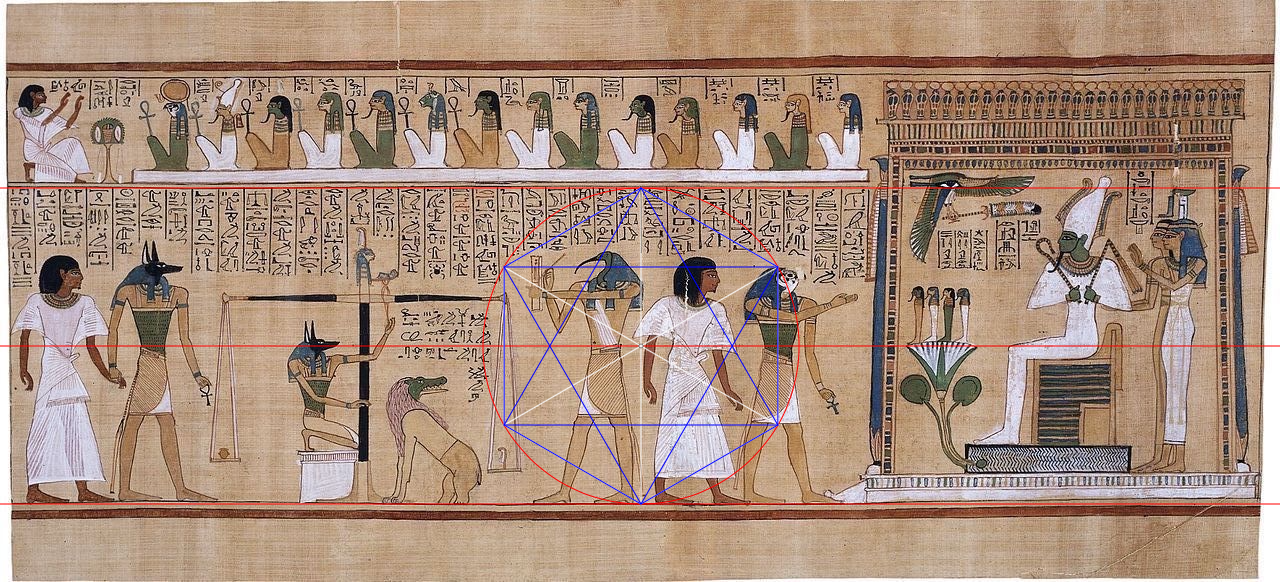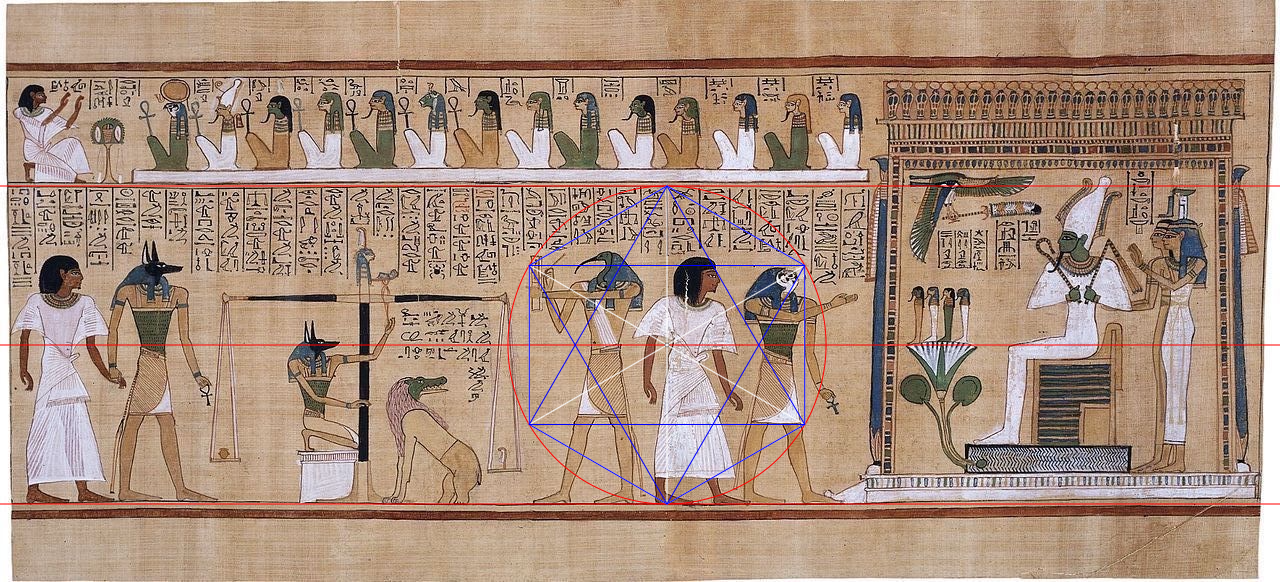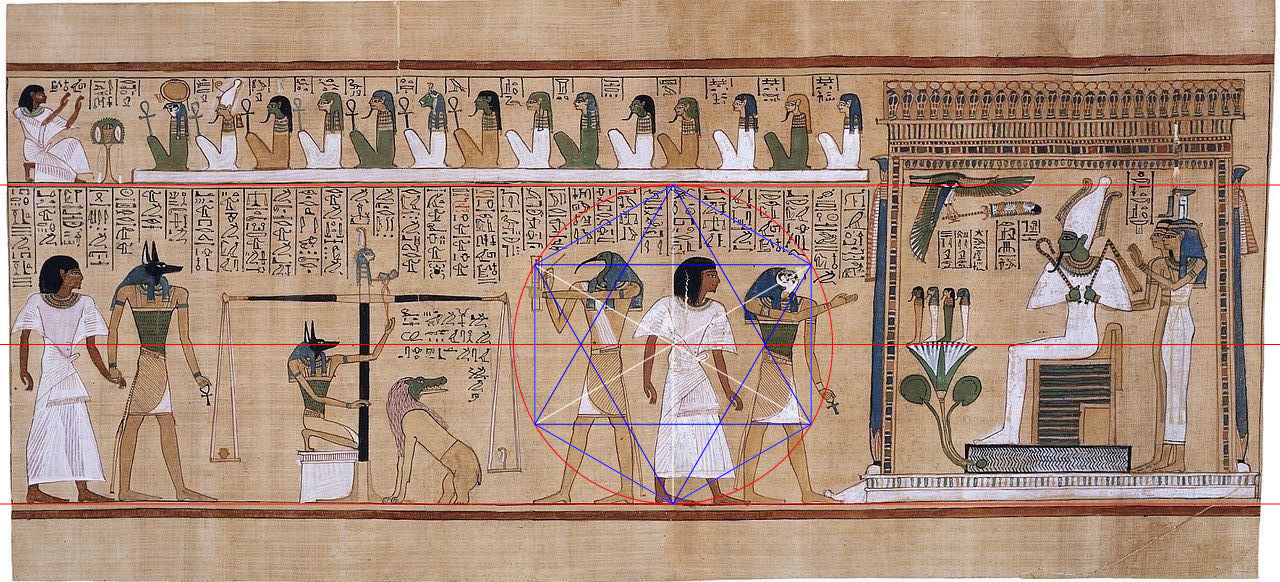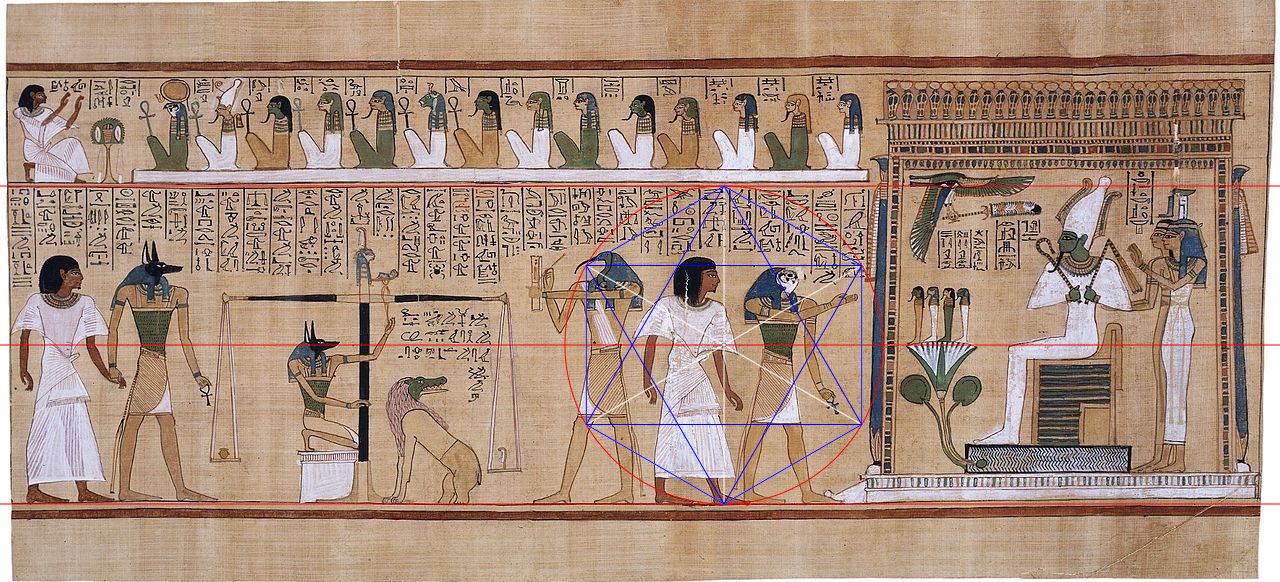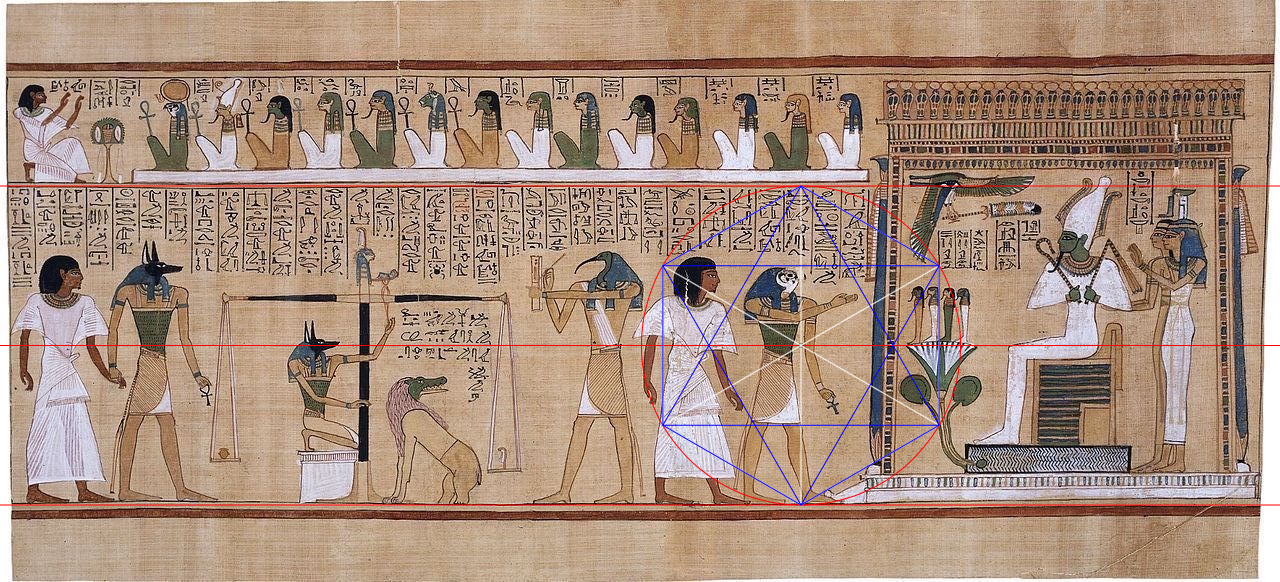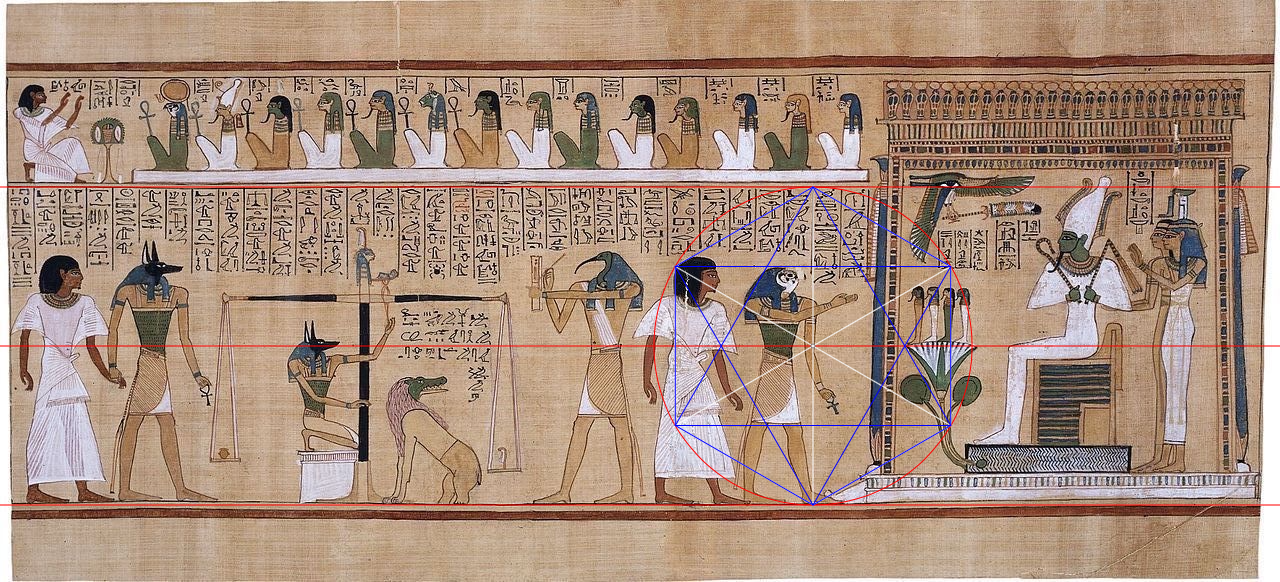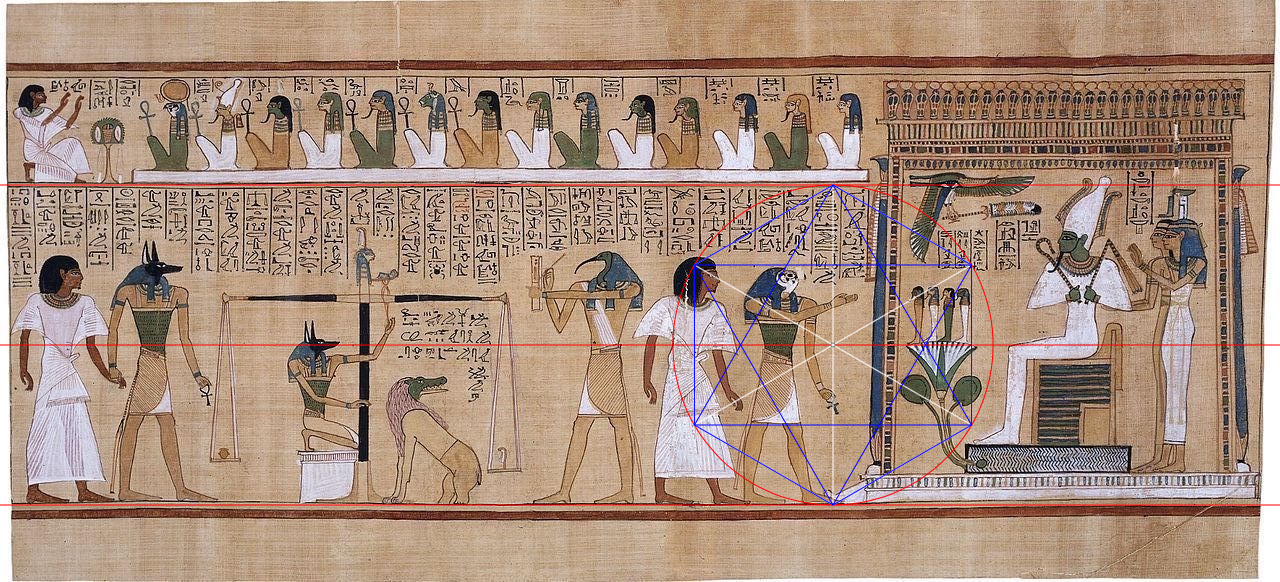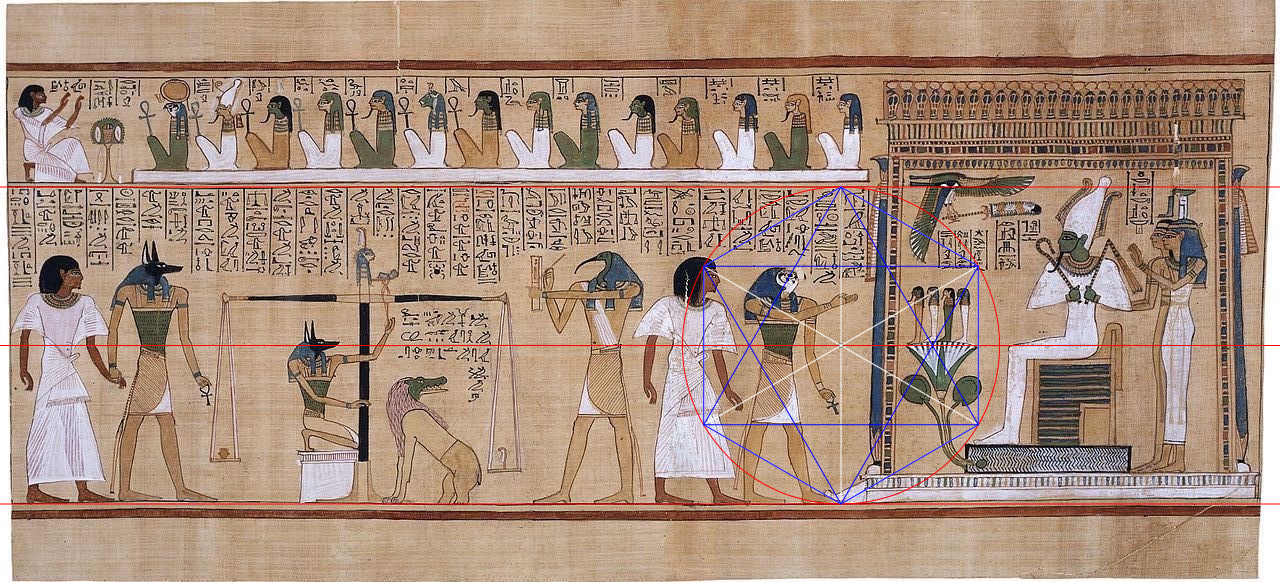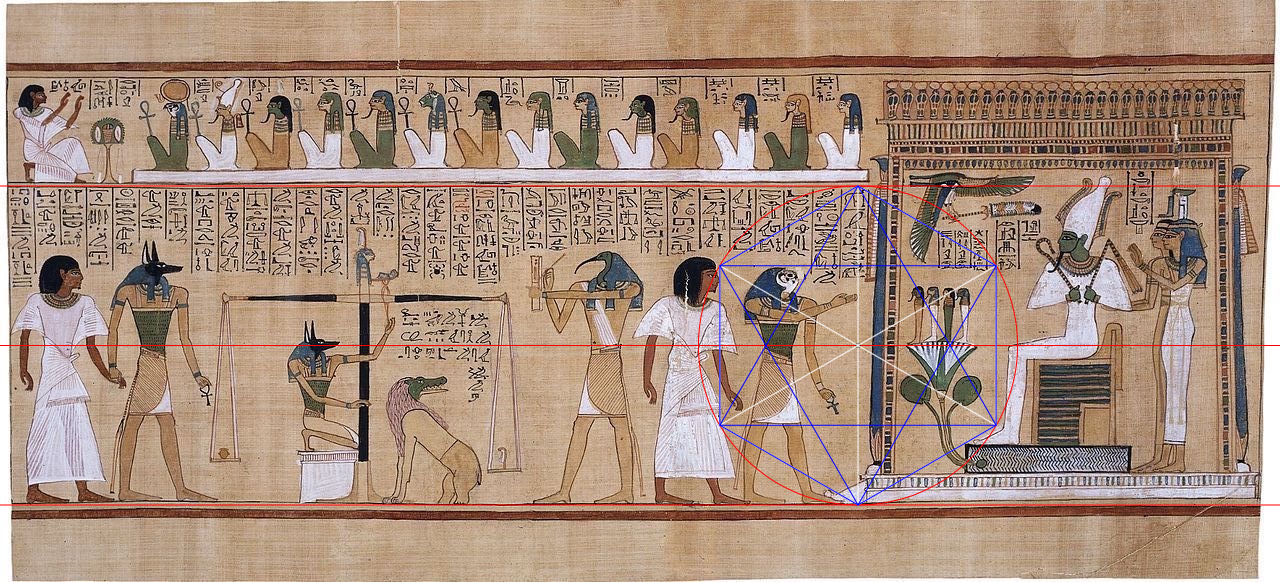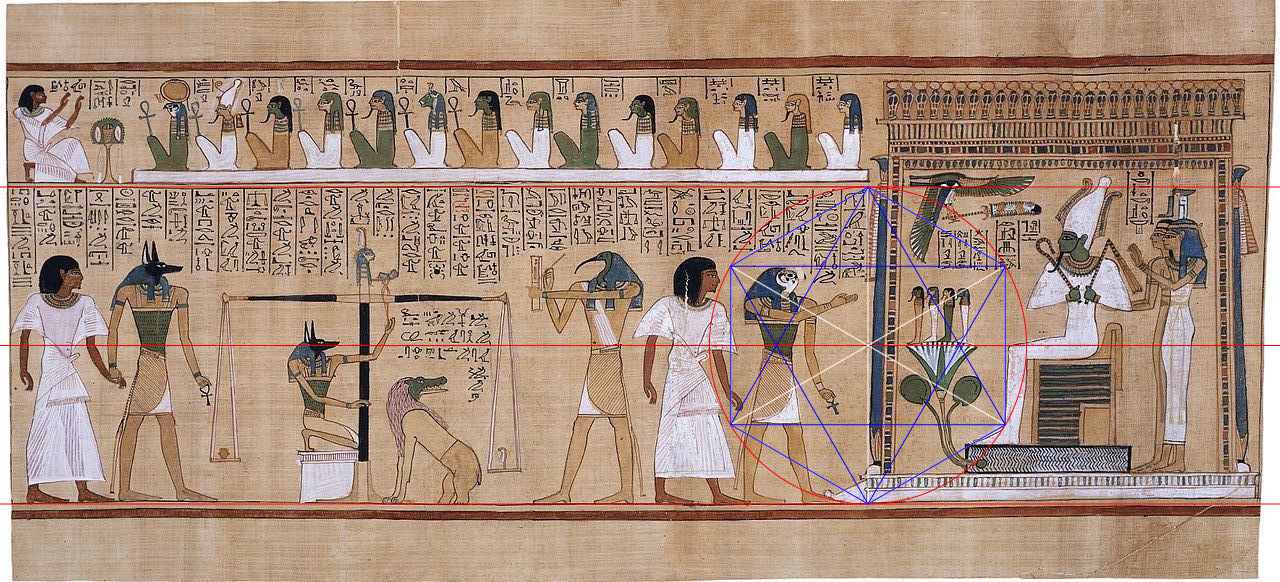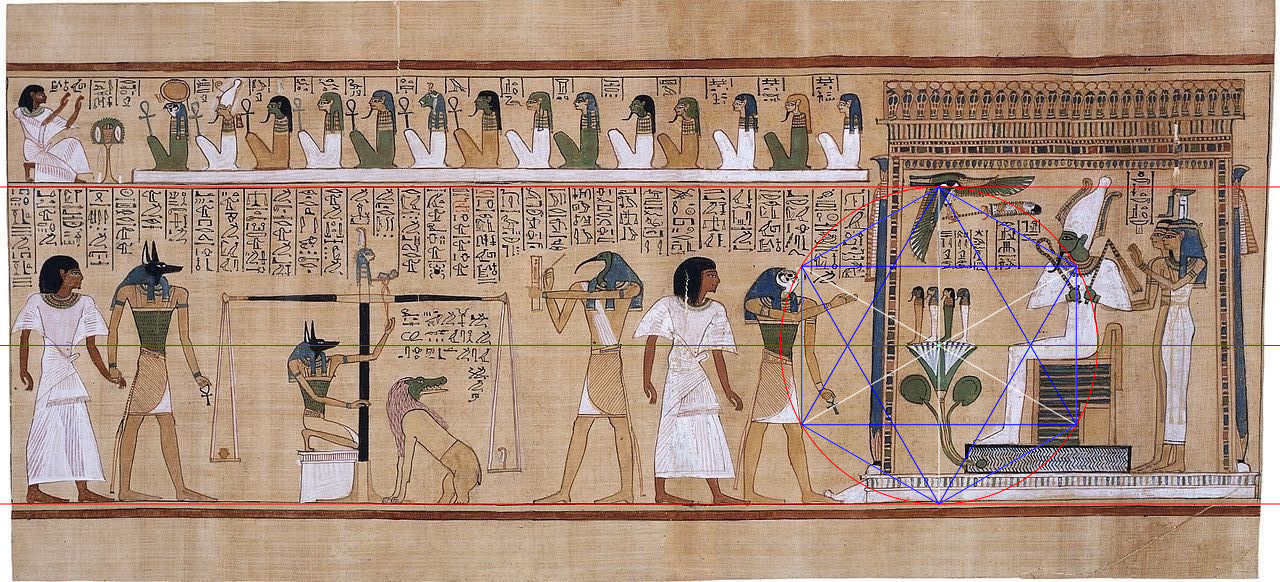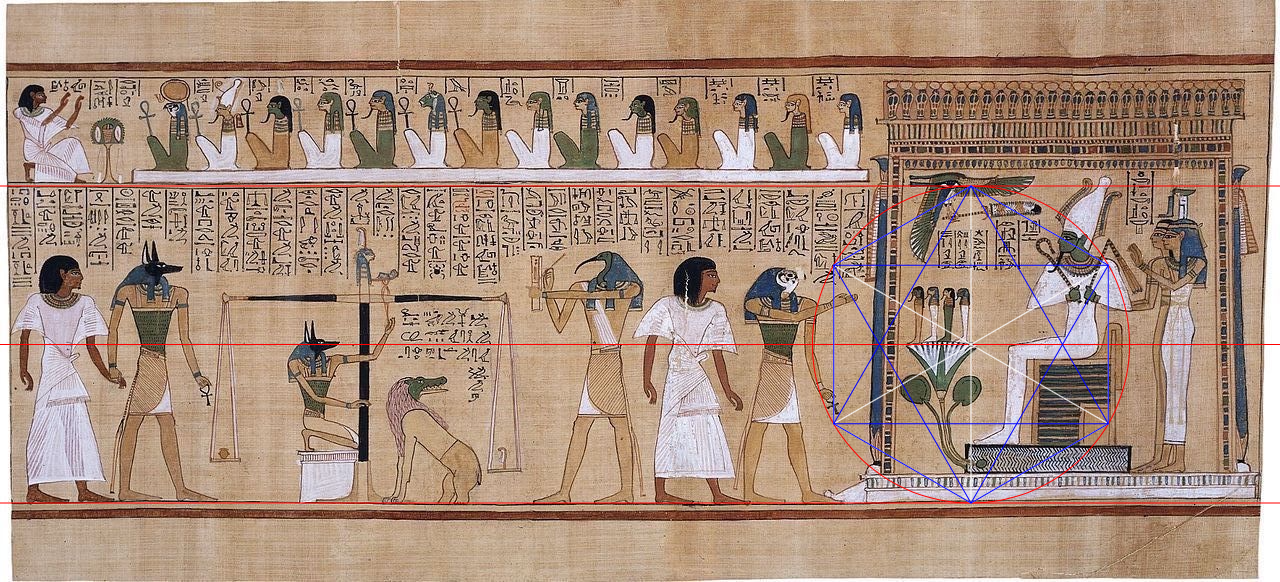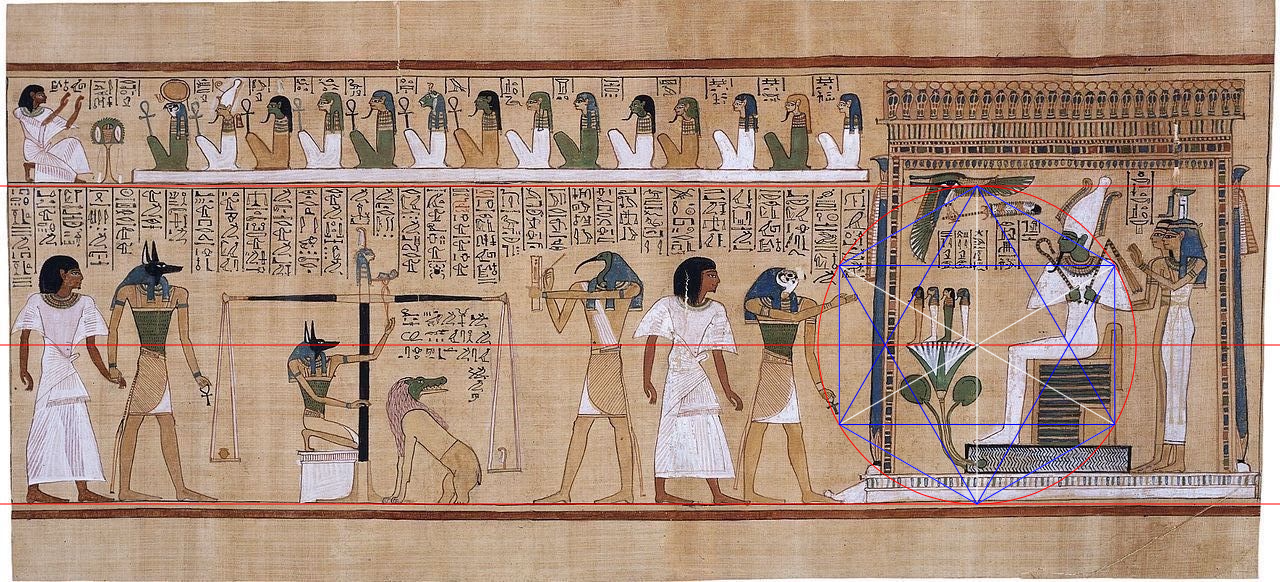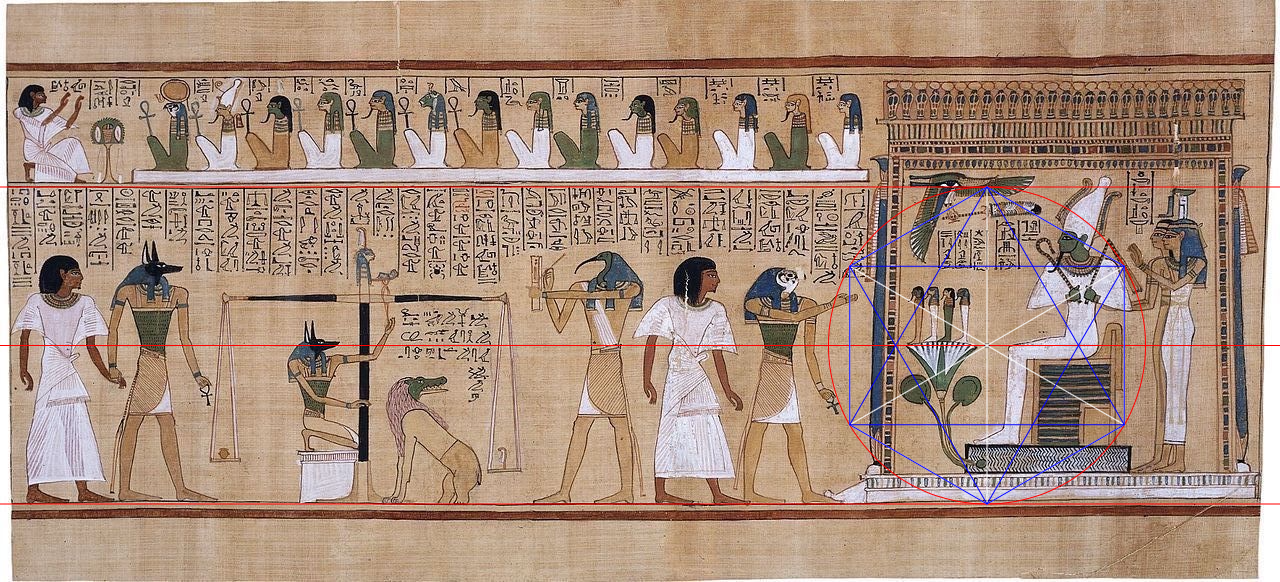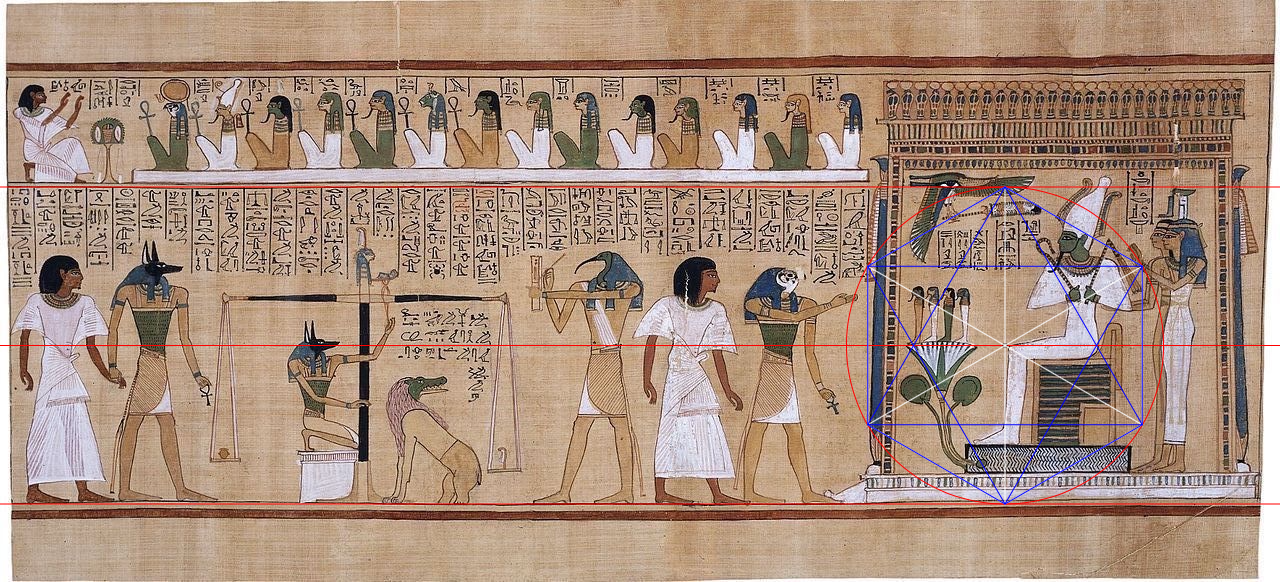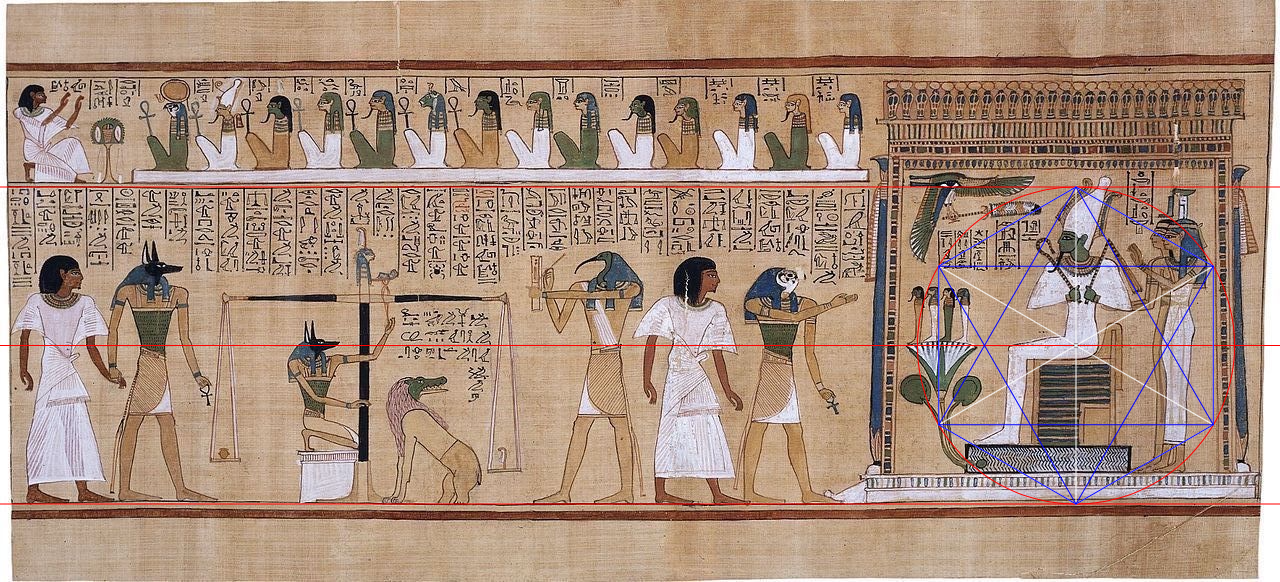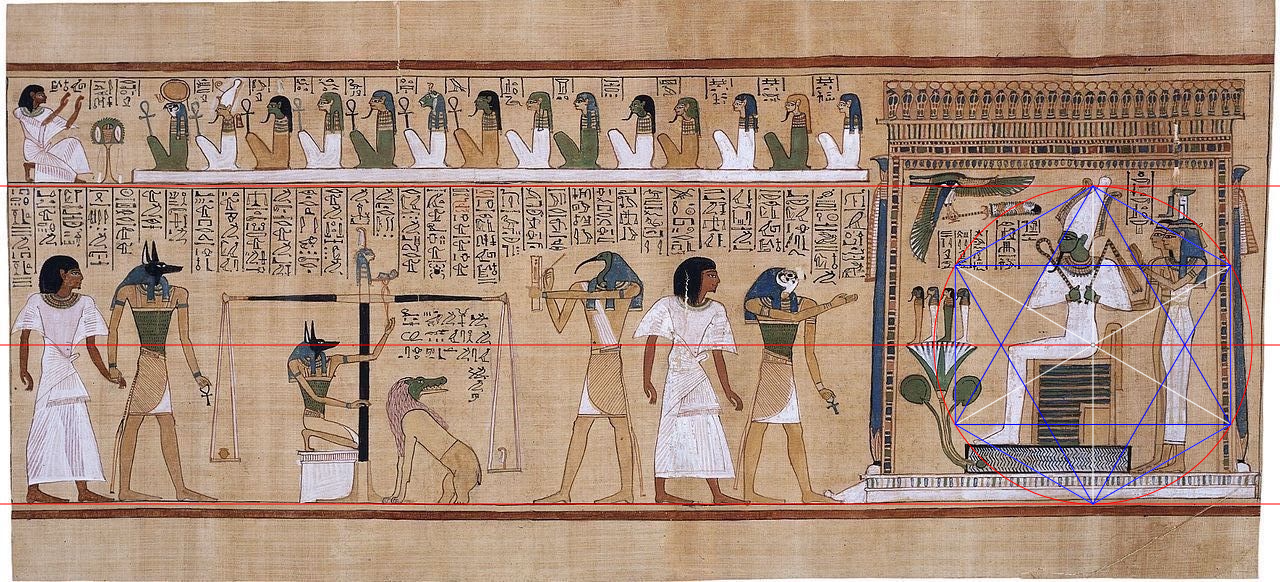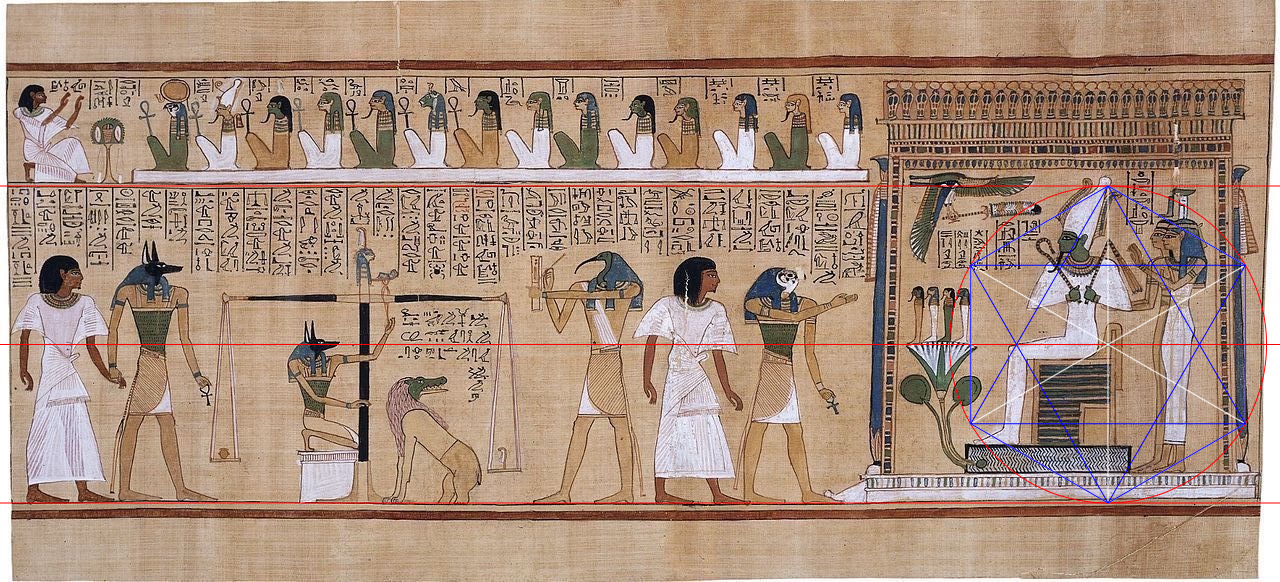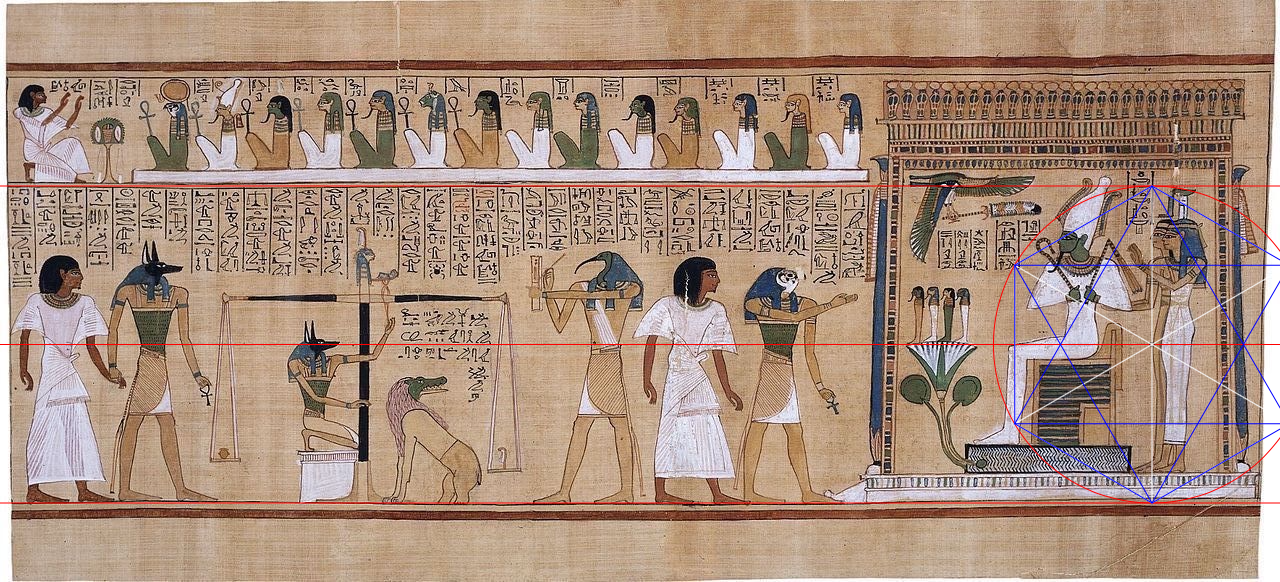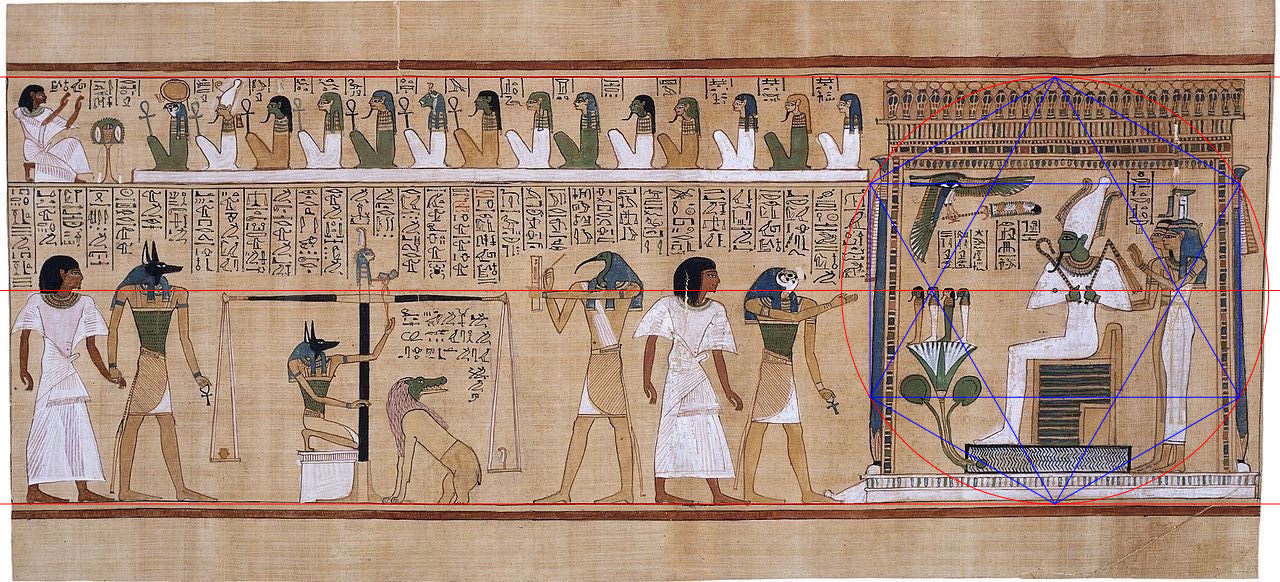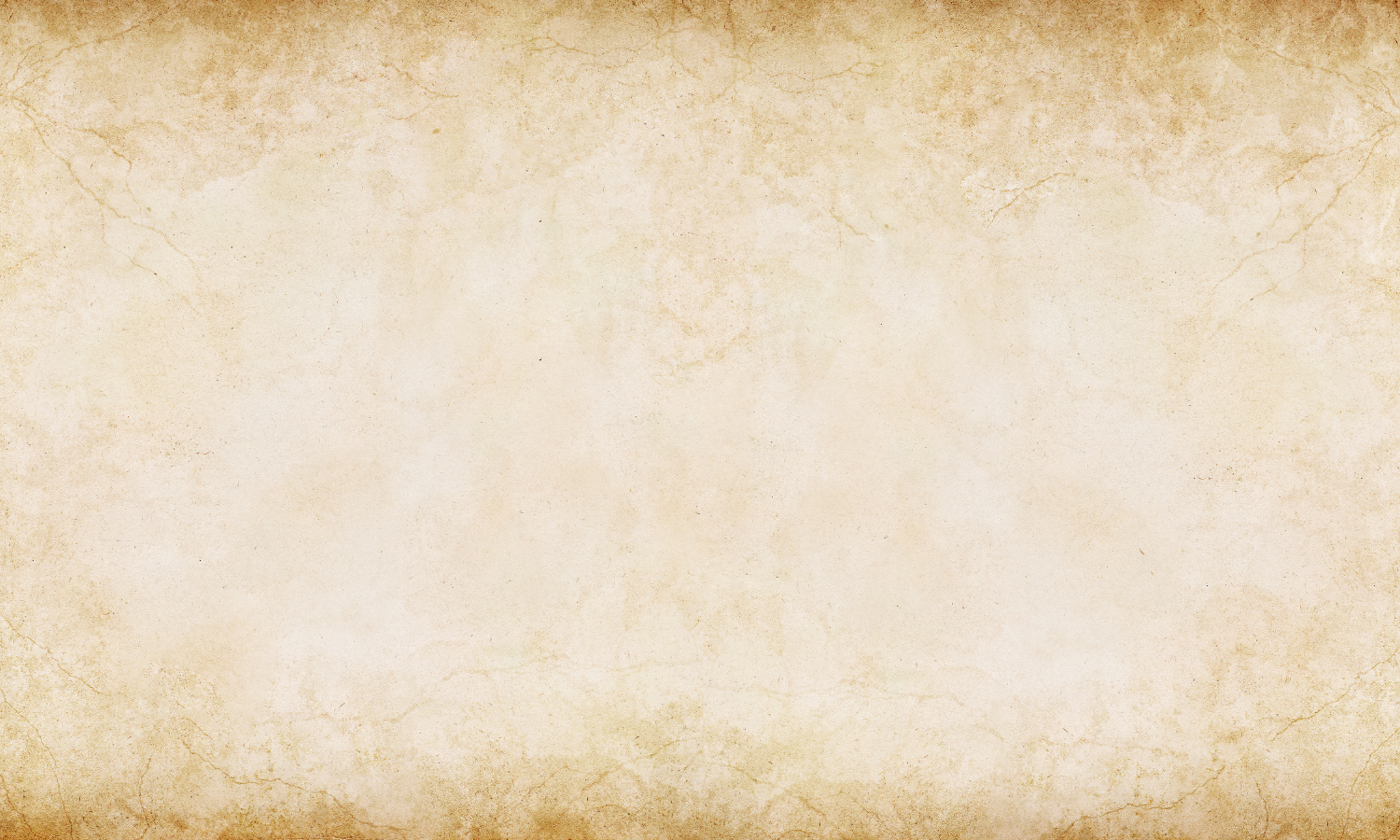
PACAL SARCOPHAGUS LID (PCL-R_A1-A11)
This image of Pacal’s sarcophagus lid is most often displayed horizontally it should be displayed vertically depicting his ascent. The Portal Grid software only works on the horizontal plane, so the y-axis is actually the x-axis with the centerline located by the outer baselines the real y-axis. The centerline passes through the designer Chak-Kan’s eye, at the bottom or far right, through Pacal’s left wrist, then tangents Chak-Kan’s earspool that symbolizes the pole star at the top or far left. As described in the comments for Art Motifs Fig.114, the centerline represents earth’s polar axis as the Square Root of Three. The two pairs of ‘hooks’ at the right or bottom represent earth’s plane of the ecliptic and its celestial equator. Pacal is ‘riding’ earth’s axis and adjusting his ascent with his right palm and fingers by manipulating earth’s rotation and axial tilt. The y-axis is aligned to the center divisions separating the glyphs similar to the Papyrus of Ani. Another quite significant similarity is the scale’s balance beam and the ‘T’ cross piece above Pacal’s head that tilt down from left to right both seeming to mimic the symbolic angle of earth’s celestial equator. Pacal is very likely adjusting his approach to the ‘pole star’ portal as he ascends through space and time when earth’s celestial equator and axial tilt begin to align with the plane of the ecliptic on the Vernal Equinox. This is nearly the identical narrative as the Weighing of the Heart scene in the Papyrus of Ani except one is oriented towards the east, the other true north. Keep a close watch on the cube in Pacal’s beaded skirt as the various rays pass by. (Image Source; See Art Motifs Image Sources Fig.114)

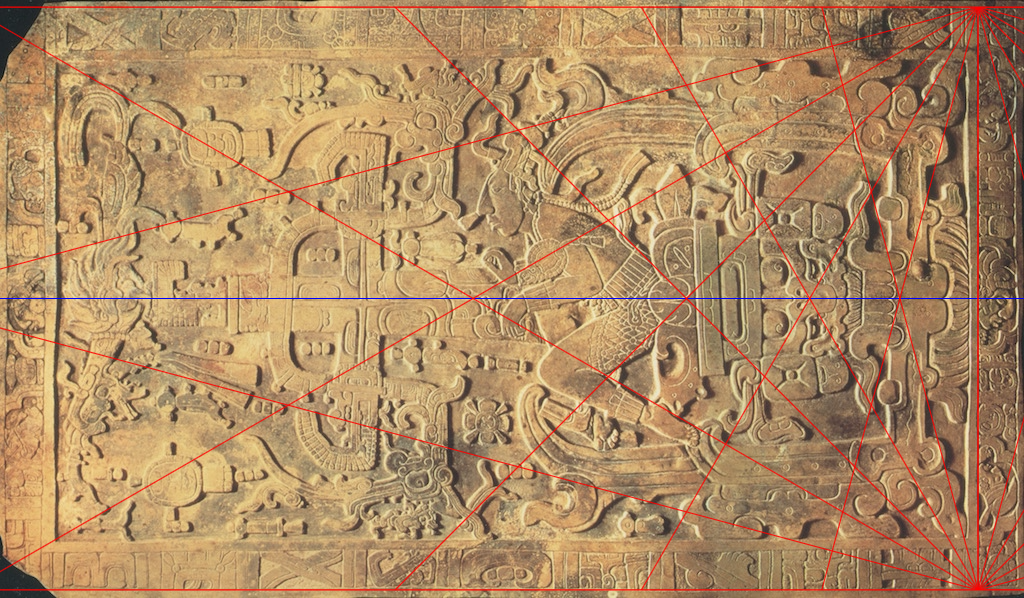
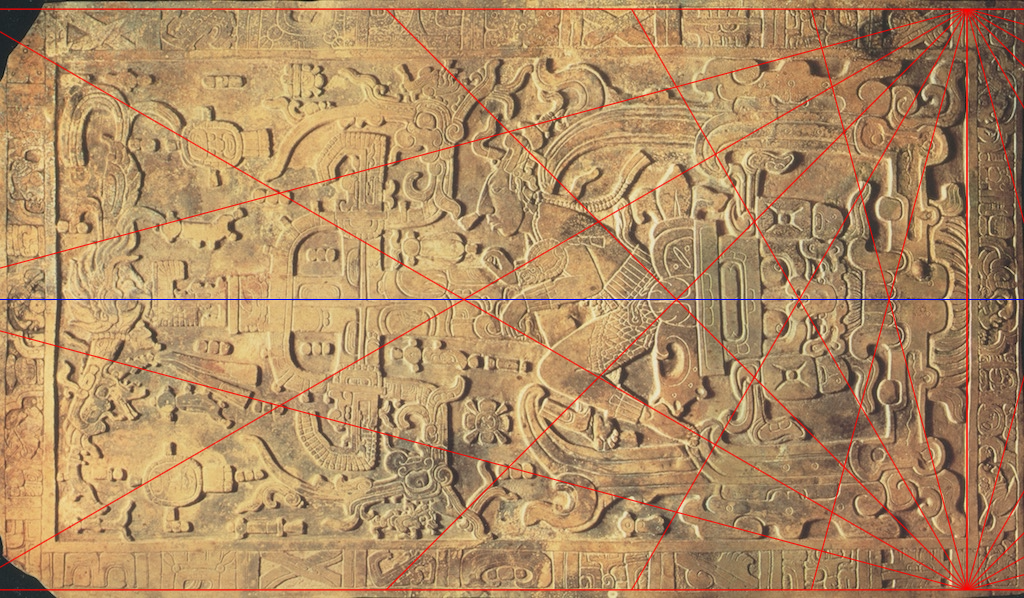



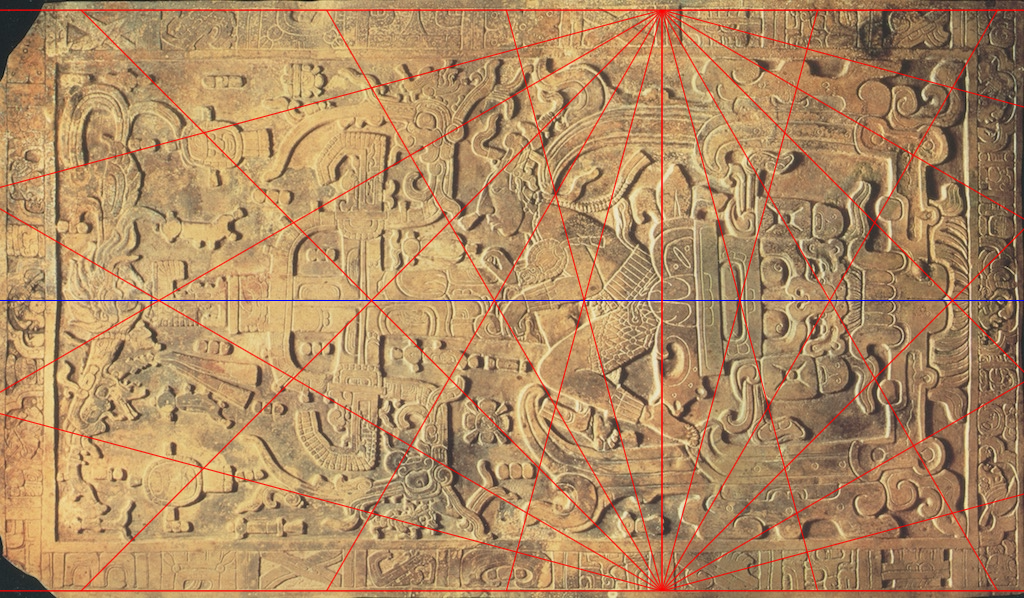


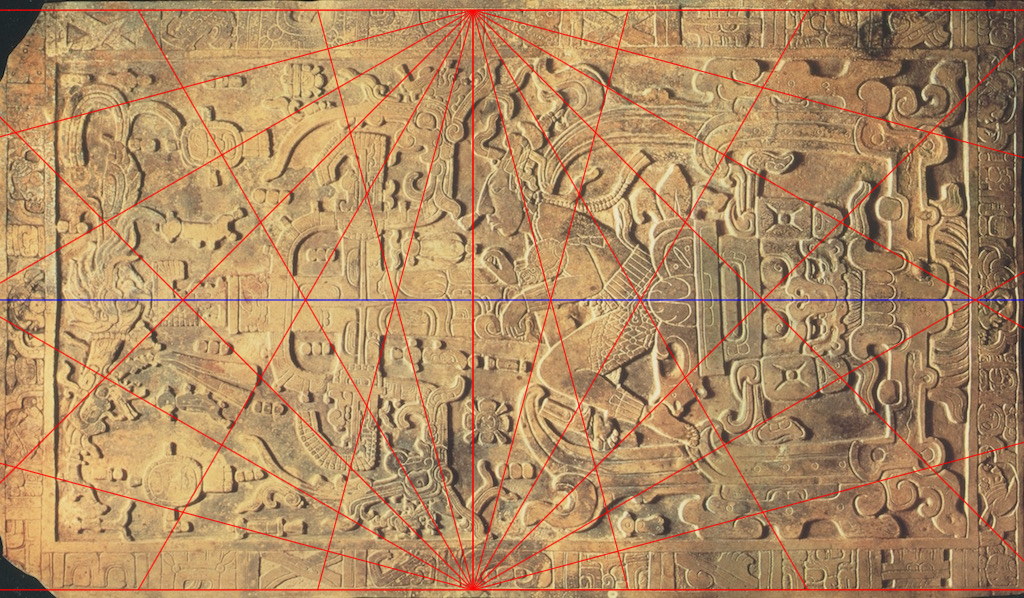
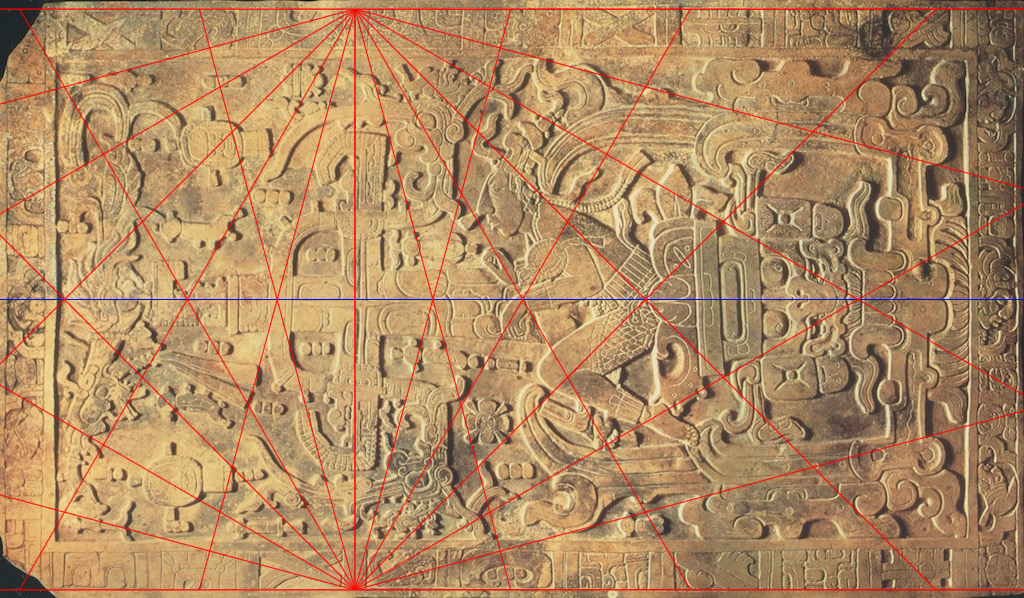
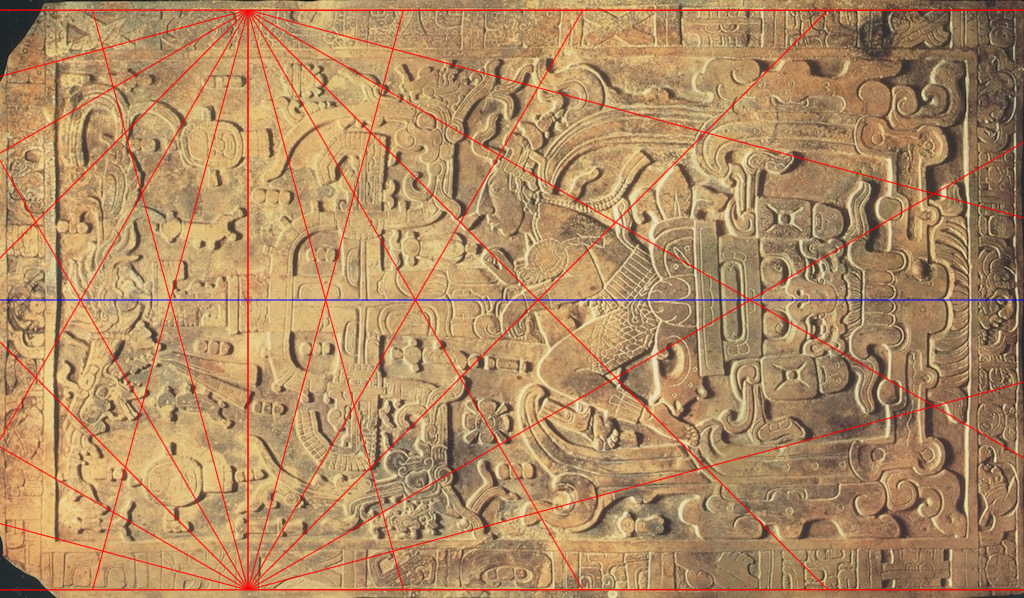
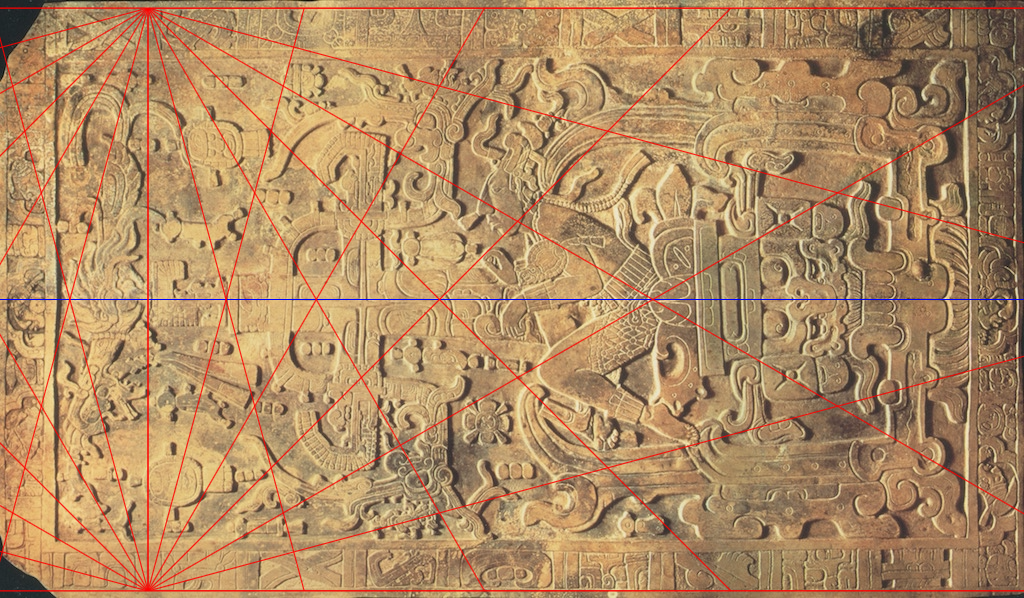
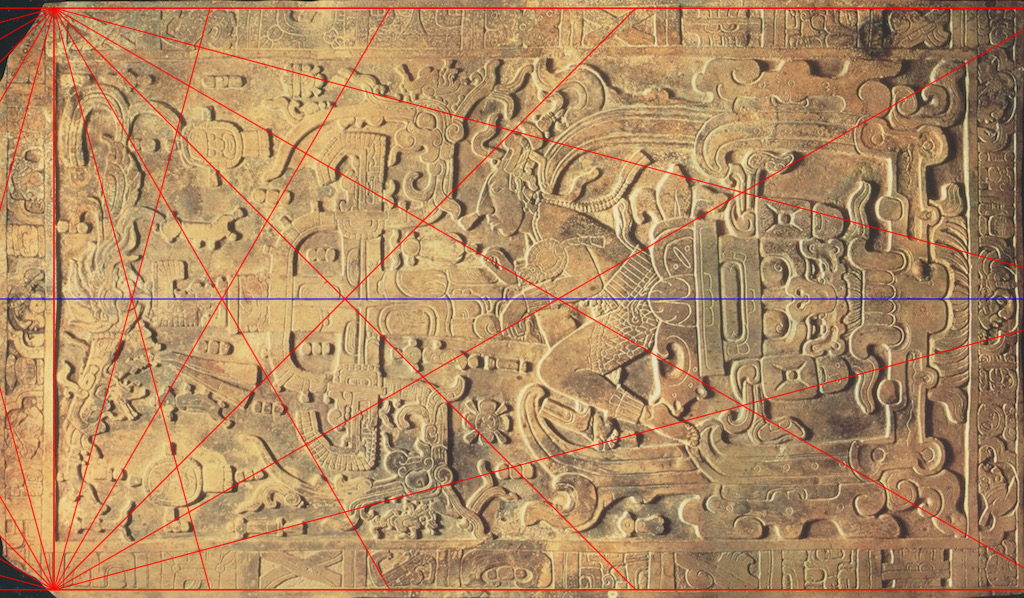


PAPYRUS OF HUNEFER (HNFR-R_A1-A34)
The centerline projected by the outer baseline pair in this version of the Weighing of The Heart scene from the Papryus of Hunefer appears to just touch each of the two flared ends of the scale’s level balance beam. The scale stand and balance beam are perfectly plumb and level in comparison to the tilted stand and beam in the Papyrus of Ani. This suggests that the weighing of the heart against the Feather of Truth has finished whereas it appears that the weighing of the heart in the Papyrus of Ani is still ongoing. Try scrolling between HNFR-CB6PS_A14, A15 and A16 aligning the y-axis to the scale’s stand as you go. Either way they both are likely encoding the Square Root of Three, earth’s celestial mechanics on the Vernal Equinox, and slightly different afterlife cosmologies using the ‘T’ symbol. The centerline passes through Osiris’ hands that hold the crook and flail, but not the uas scepter as in the Papyrus of Ani. Follow the narrative unfold as the rays intersect and align the eyes, ears, hands and feet, different parts of the scales, the Heart and the Feather of Truth, Thoth’s pen and tablet and Ammit’s eye.
(WIKIMEDIA COMMONS/PUBLIC DOMAIN)




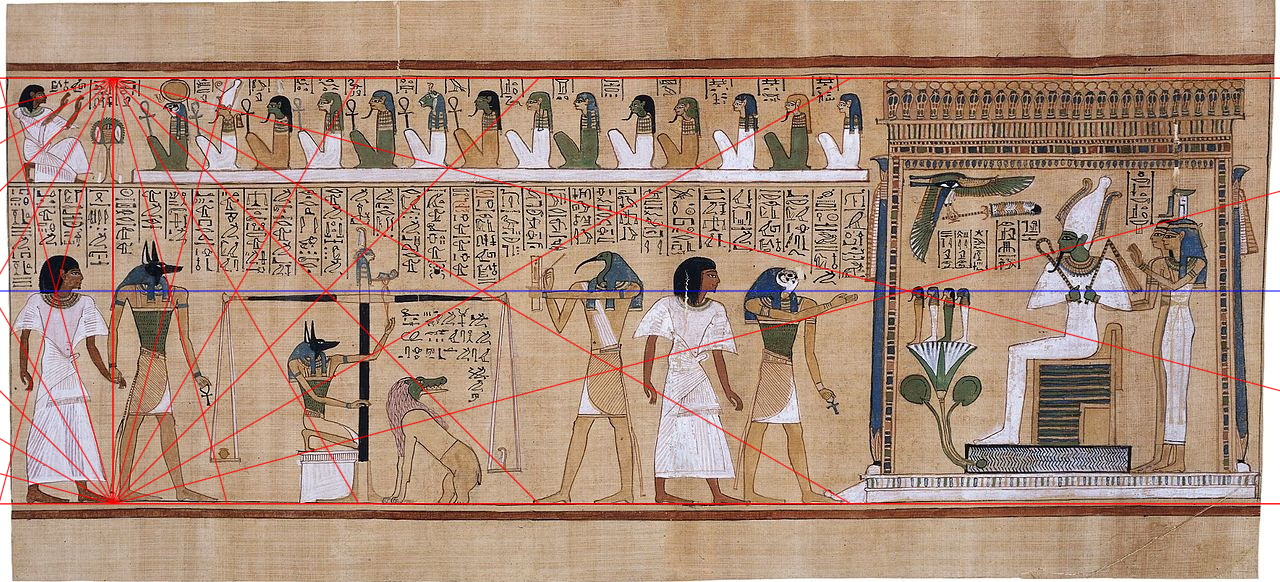


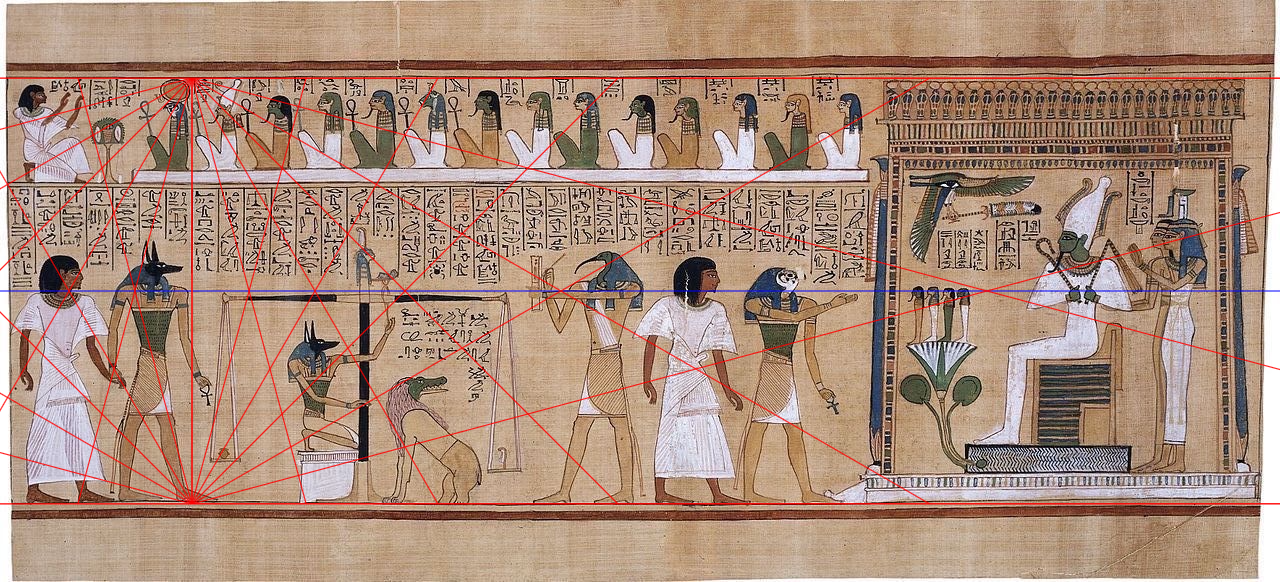

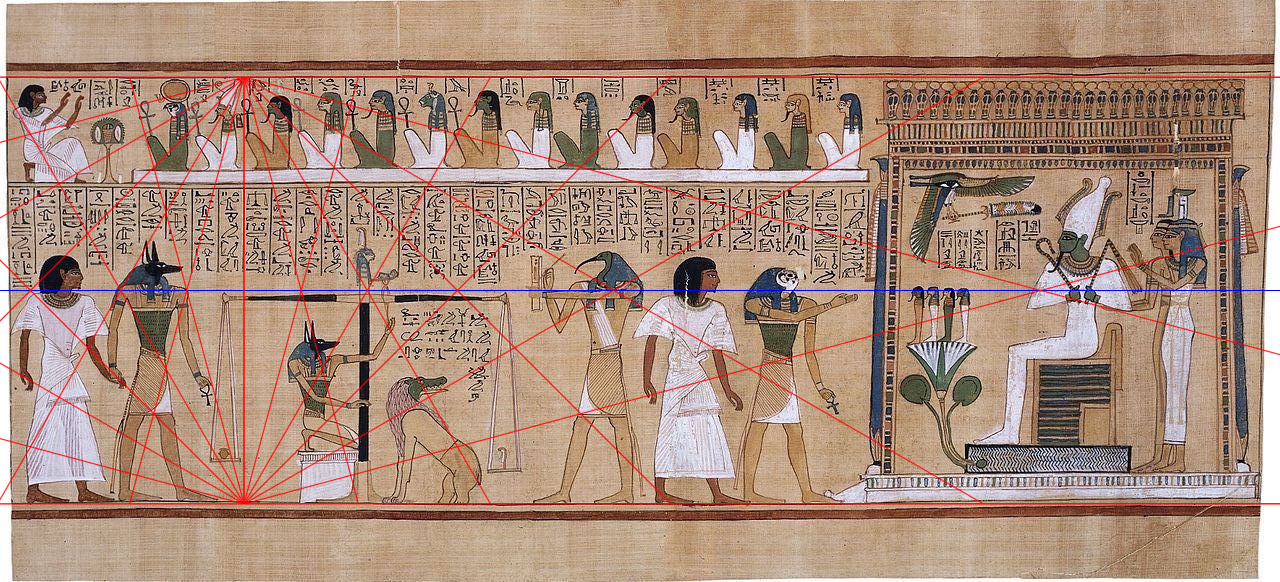
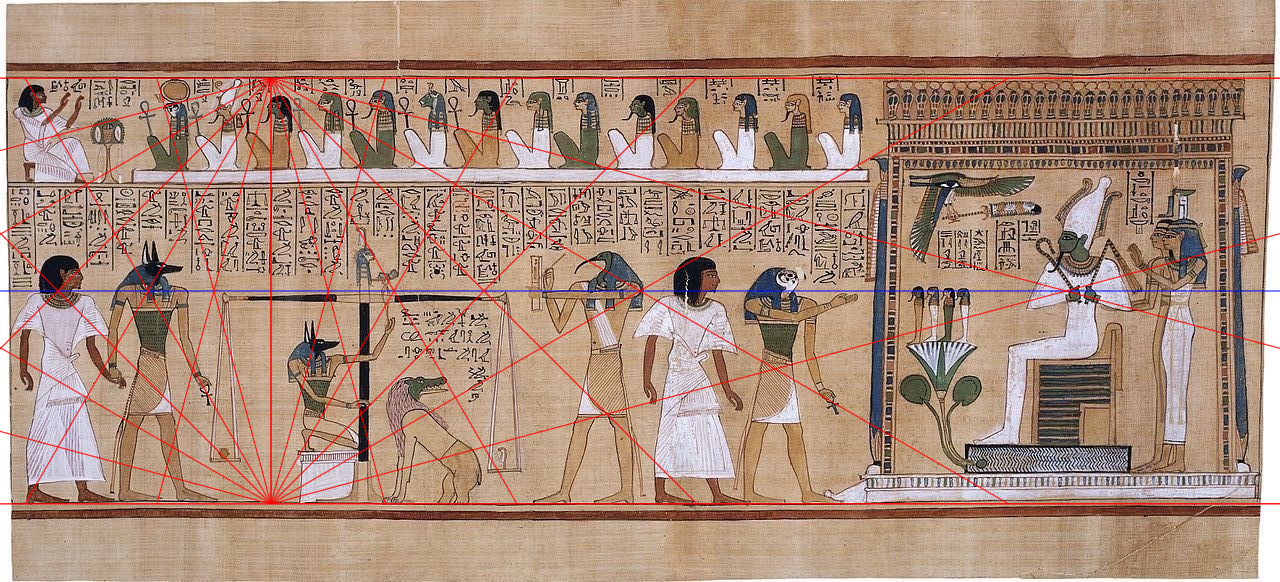

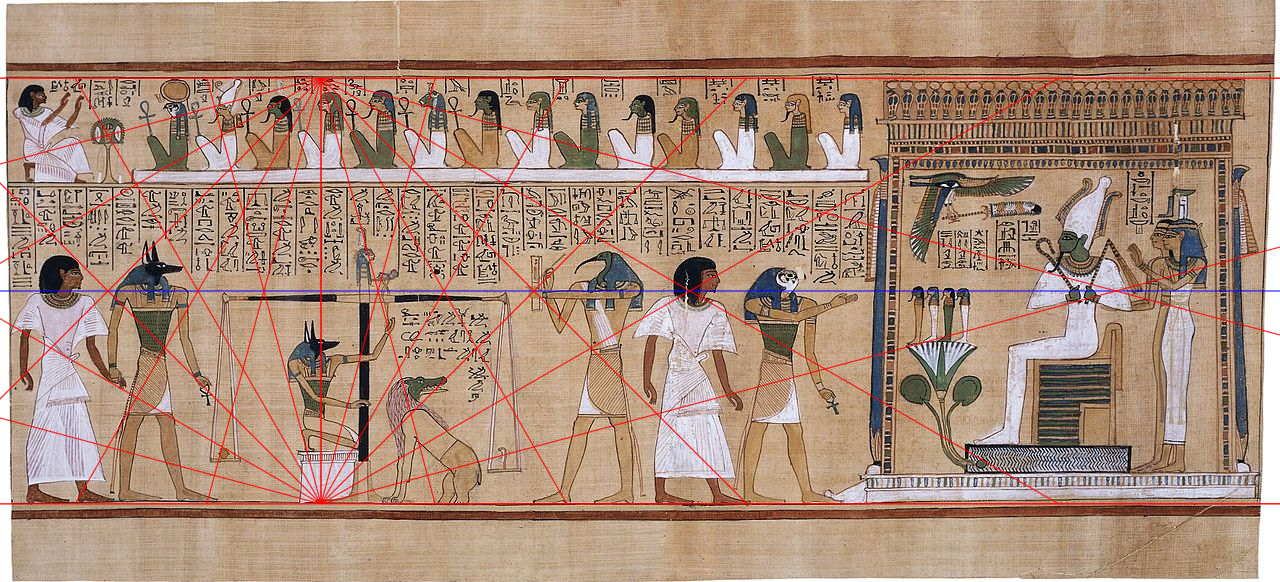

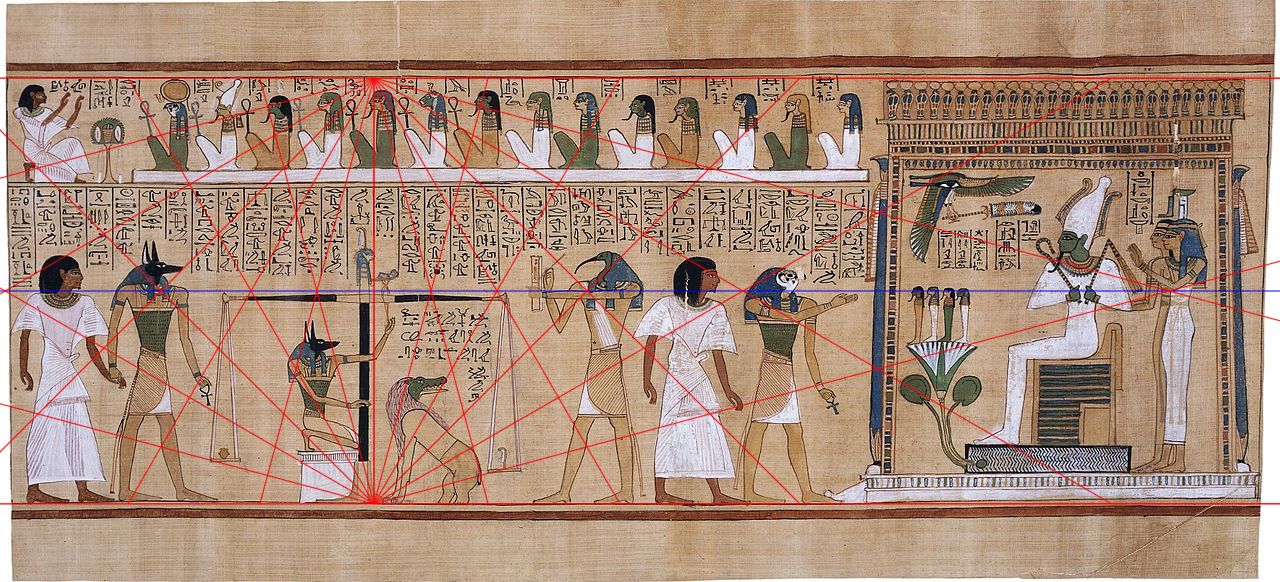
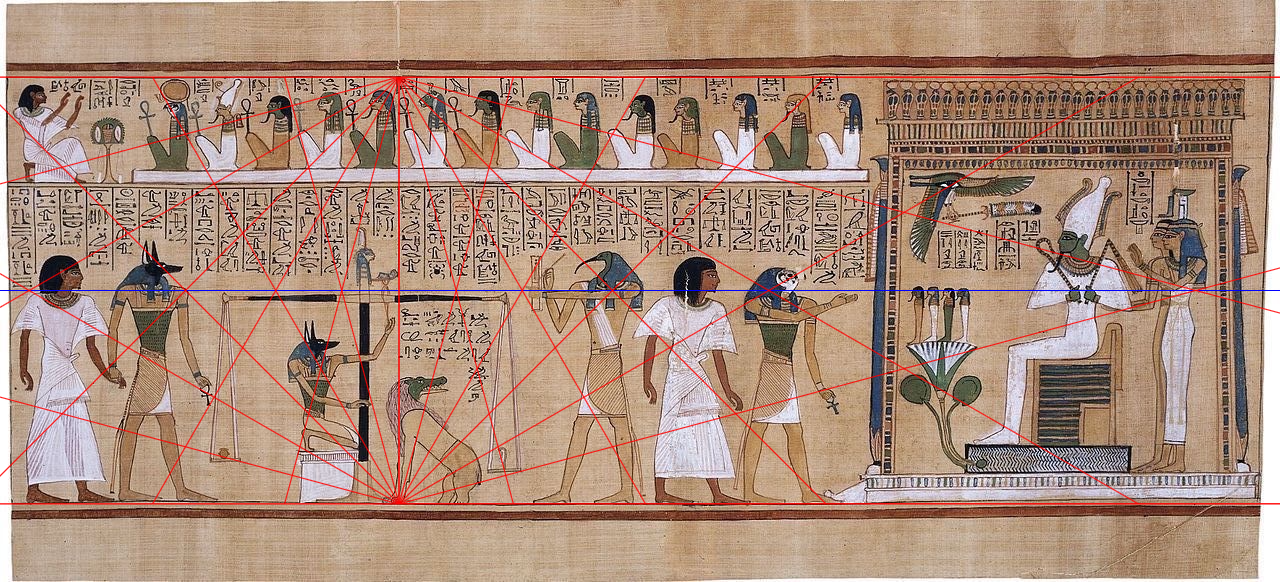


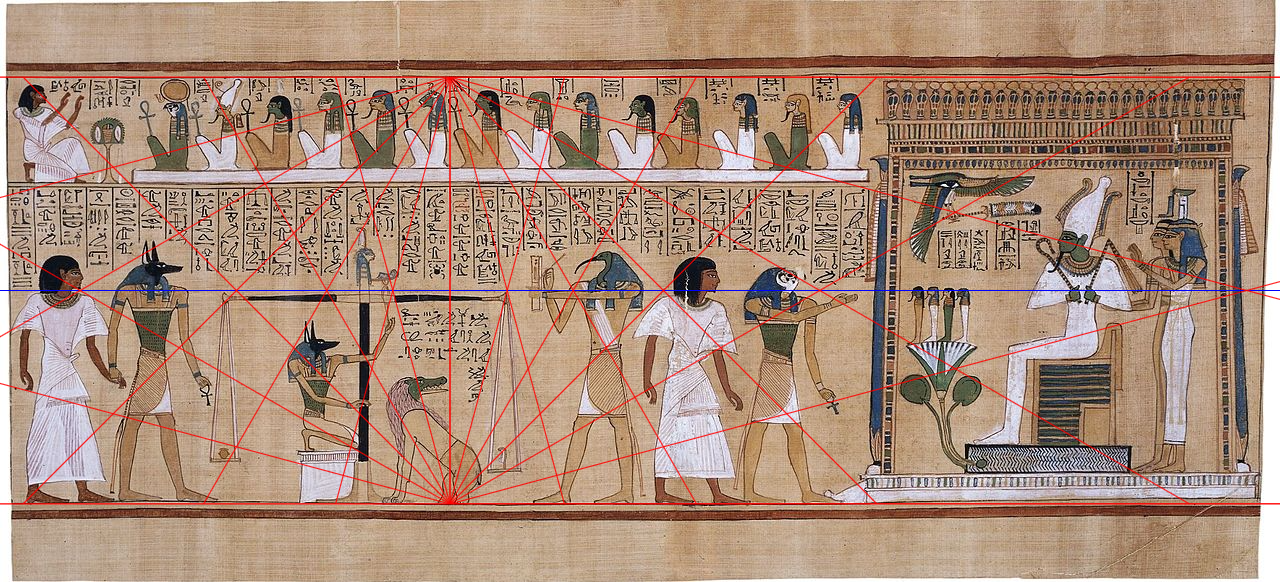
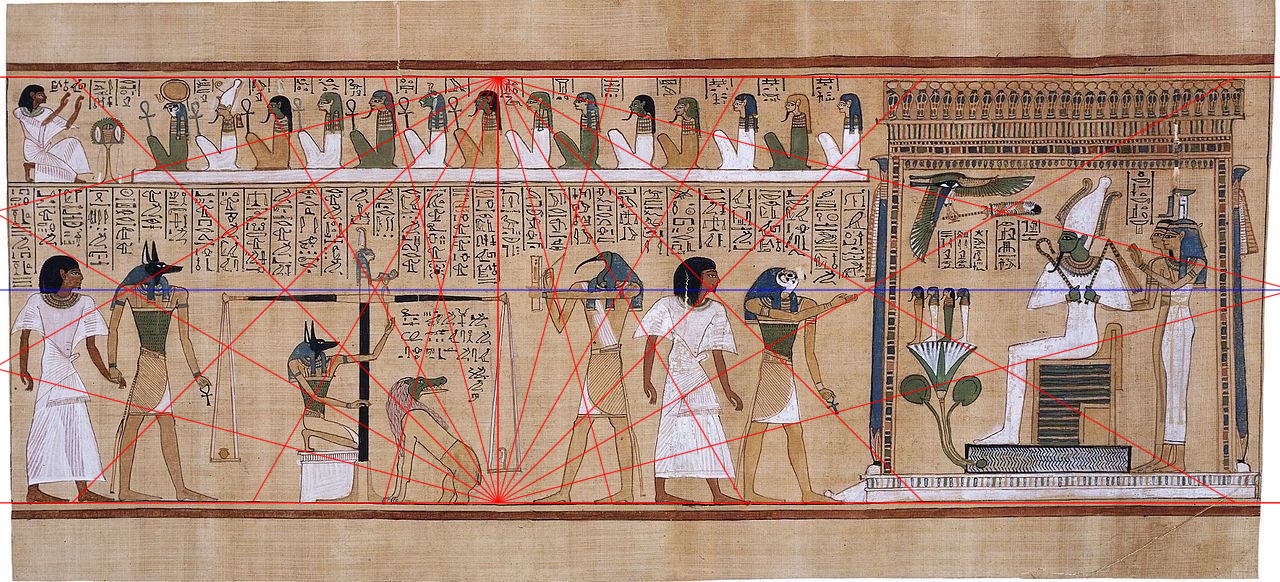
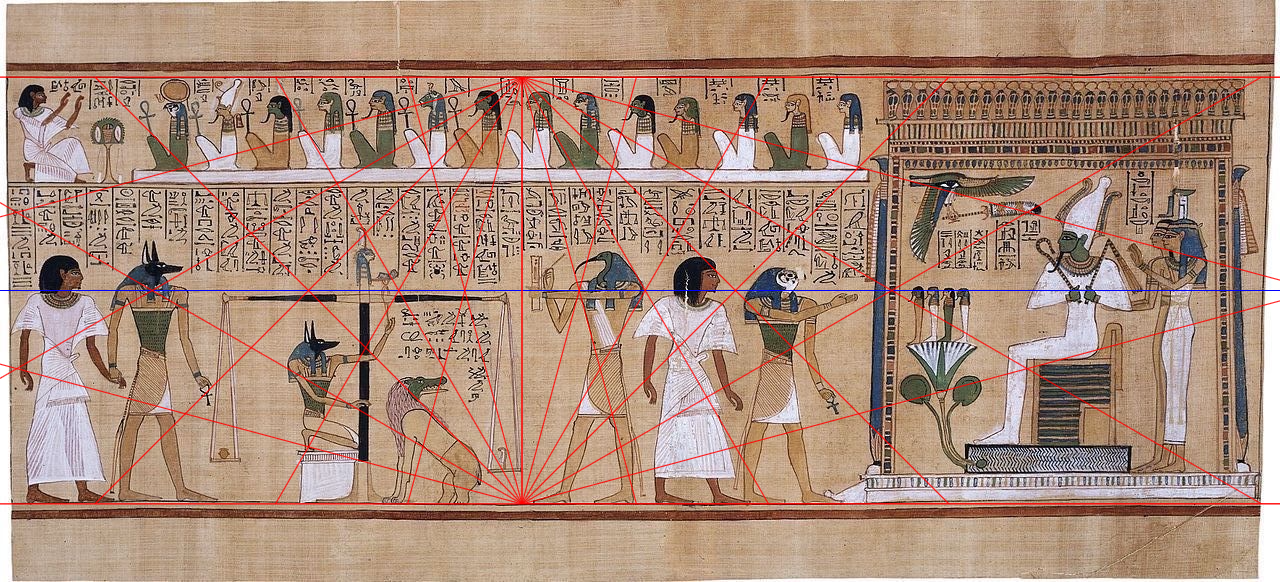

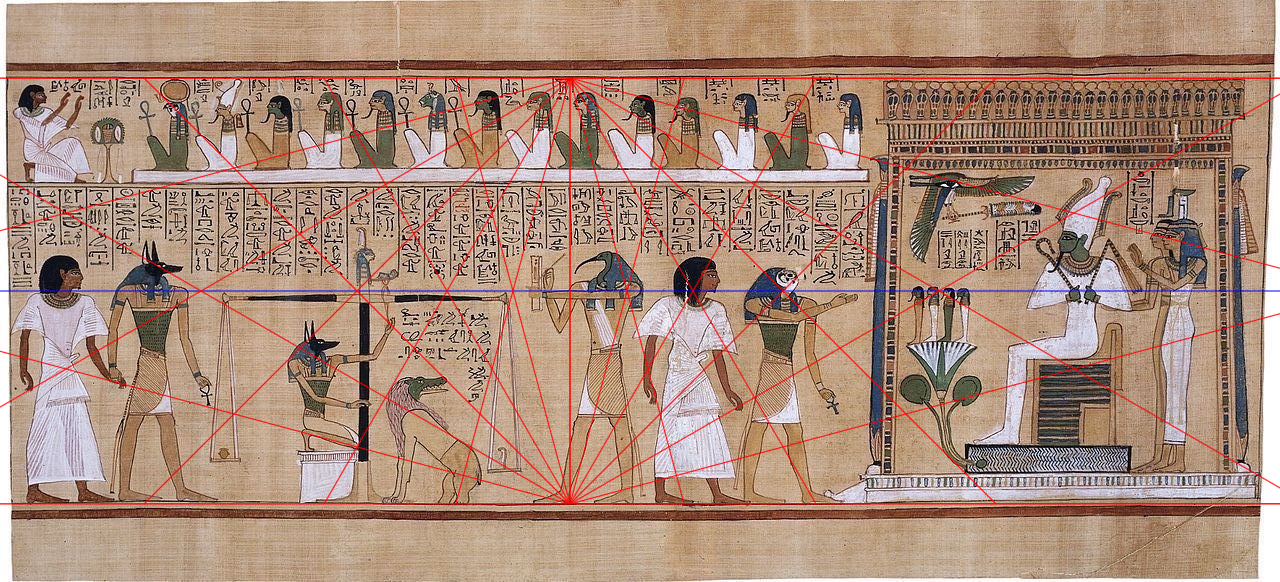
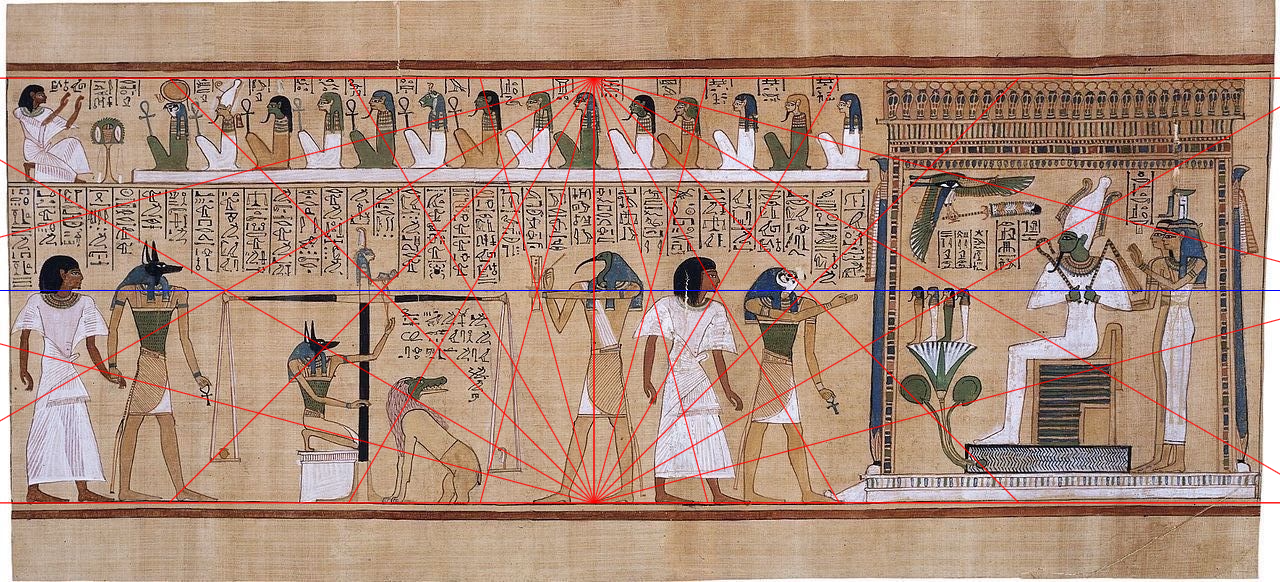



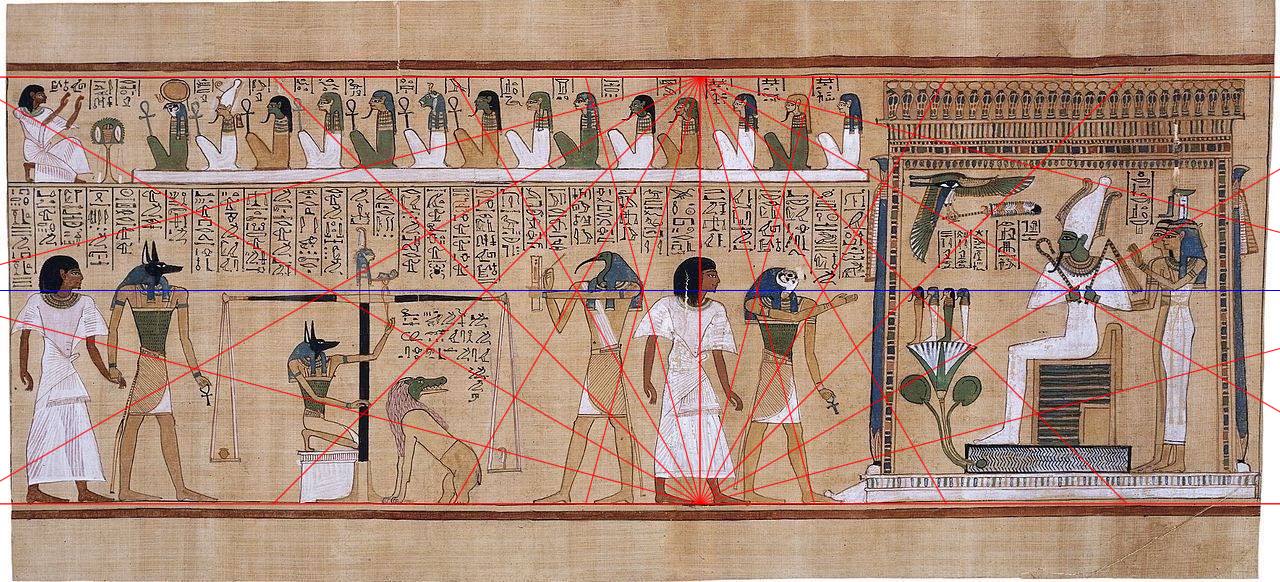







PAPYRUS OF HUNEFER (HNFR-CB6PS_B1-B35)
Similar to the Papyrus of Ani, the upper baseline chosen to pair with the lower baseline is the long horizontal border above the columns of hieroglyphs. This is also an example of additional baselines and narratives encoded within the larger narrative. The centerline passes through Anubis’ eye as he watches the weighing. The composite geometric shape’s alignments begin with aligning the white cube y-axis to the vertical lines dividing the columns of glyphs with the chords of the hexagon at either end of the Square Root of Three rectangle appearing to do secondary alignments at different intervals with and in between the vertical lines and through the glyphs sometimes simultaneously in conjunction with the y-axis alignments. As with the Papyrus of Ani watch the narrative unfold as the geometry progresses aligning the glyphs to the eyes, ears, hands, feet and all the parts of the scales, the stand, the balance beam, the dishes, the cords holding them, the heart, the Feather of Truth and Thoth’s pen ant tablet. Similar to the Papyrus of Ani, the last image shows the six-pointed star’s Square Root of Three rectangle more or less aligned to Osiris’ pavilion. When scrolling the rectangle back and forth only three of the four corners seem align to the ‘pillars’ of the pavilion at any one time. These three ‘corners’ form the 30/60/90 right triangle. Using the Pythagorean Theorem and a radius of one results in a long side value of the Square Root of Three, the hypotenuse four. How might the Square Root of Three and earth’s three celestial mechanics, its orbit, rotation, and axial tilt shape Old and New World afterlife cosmologies?
(WIKIMEDIA COMMONS/PUBLIC DOMAIN)
